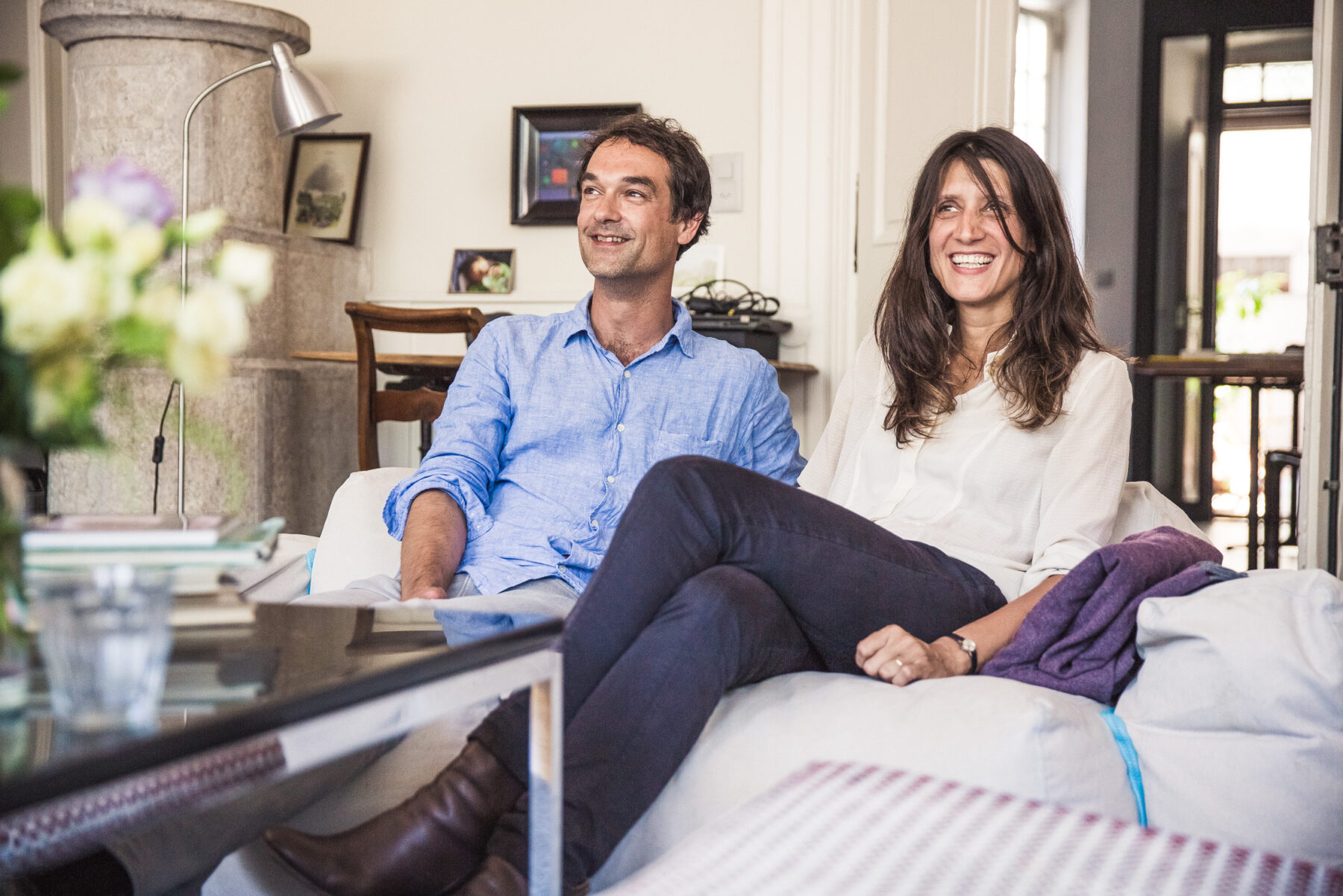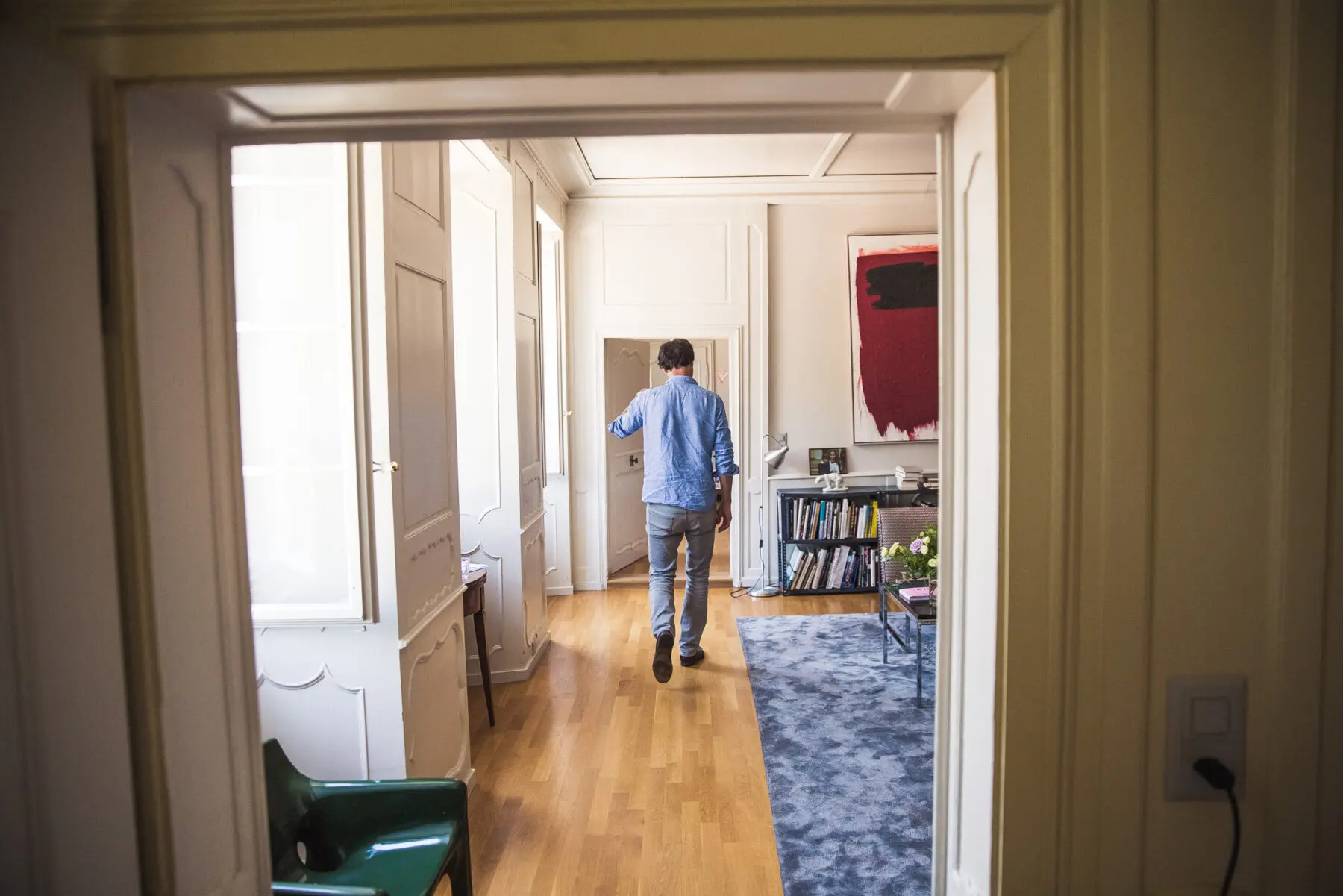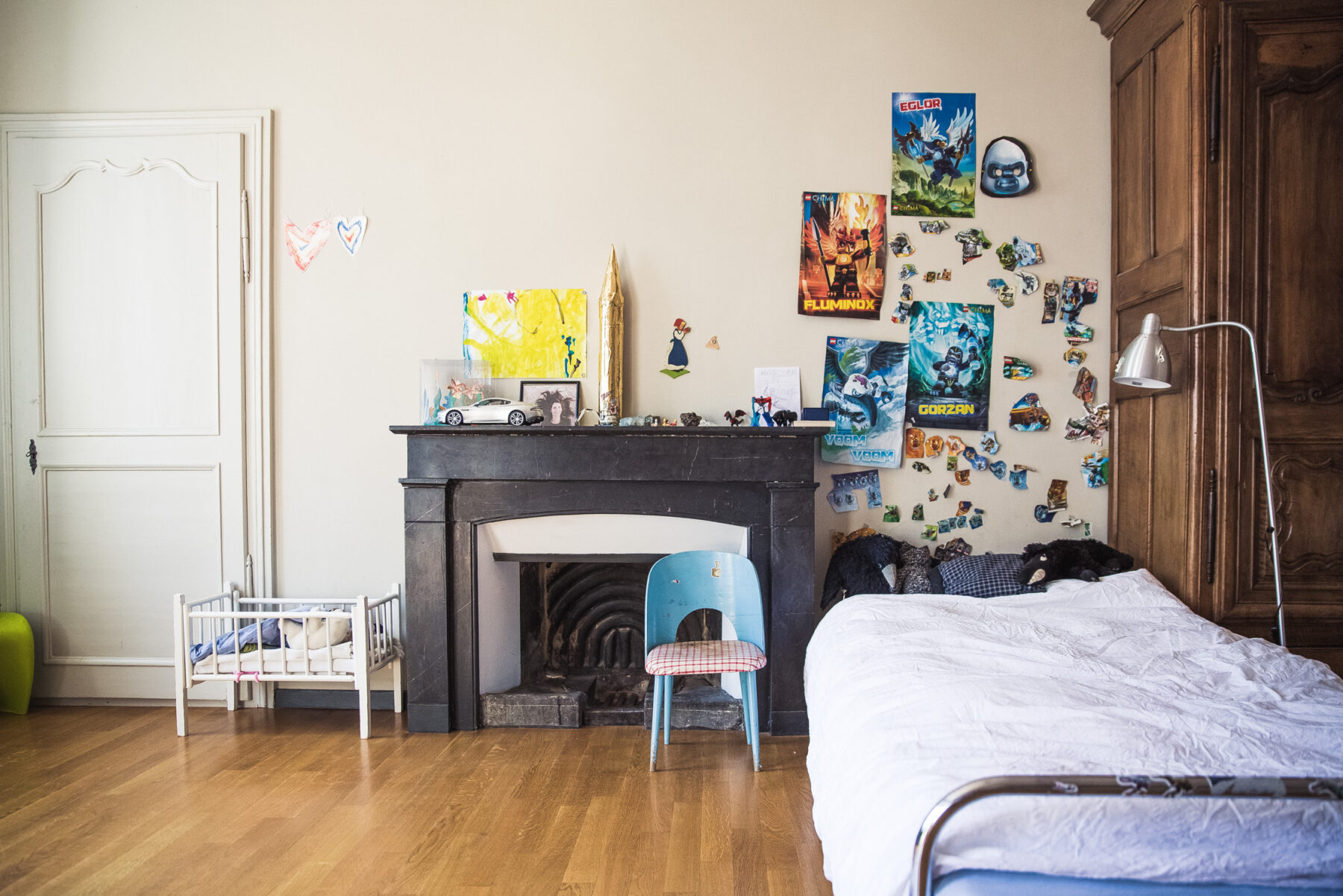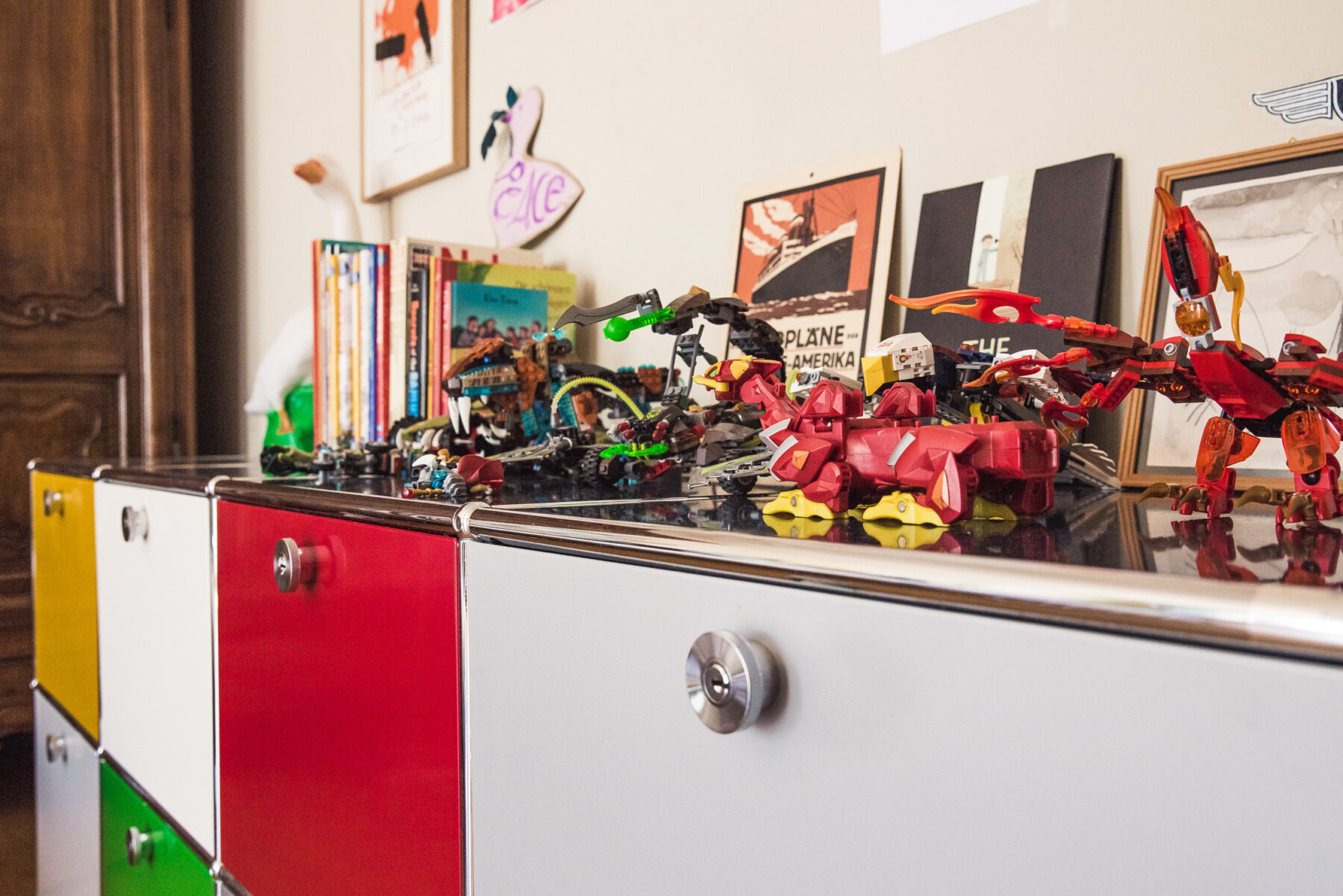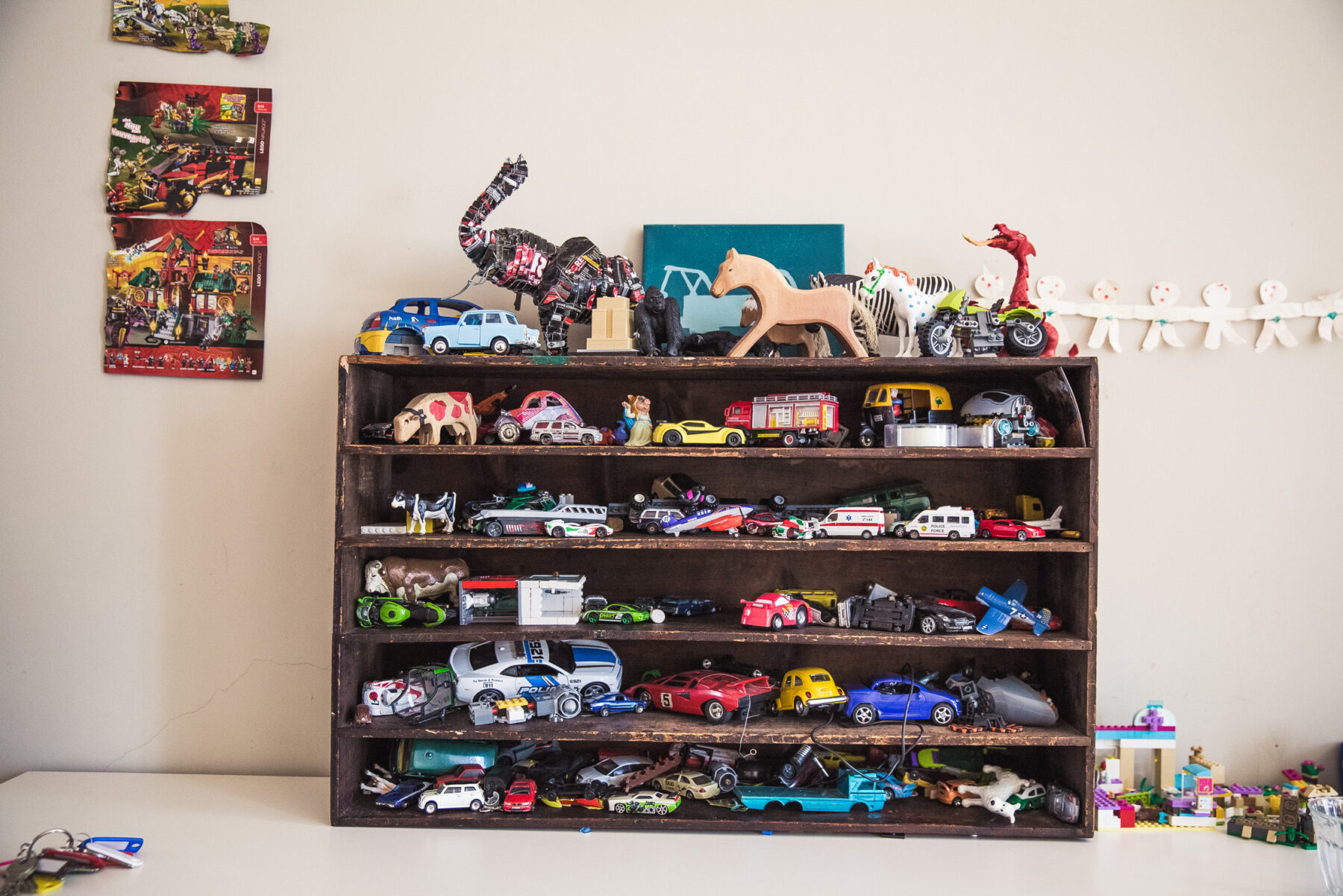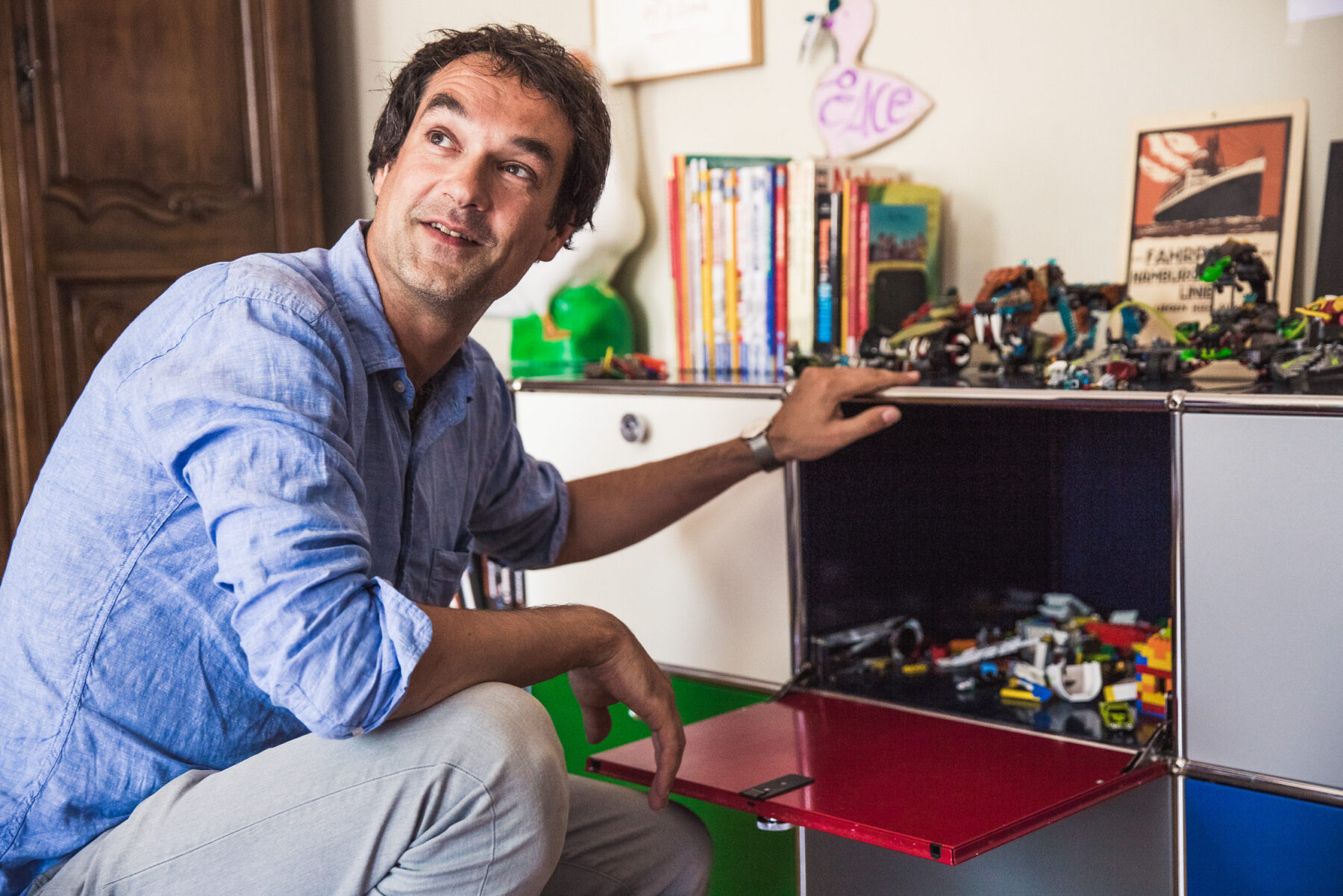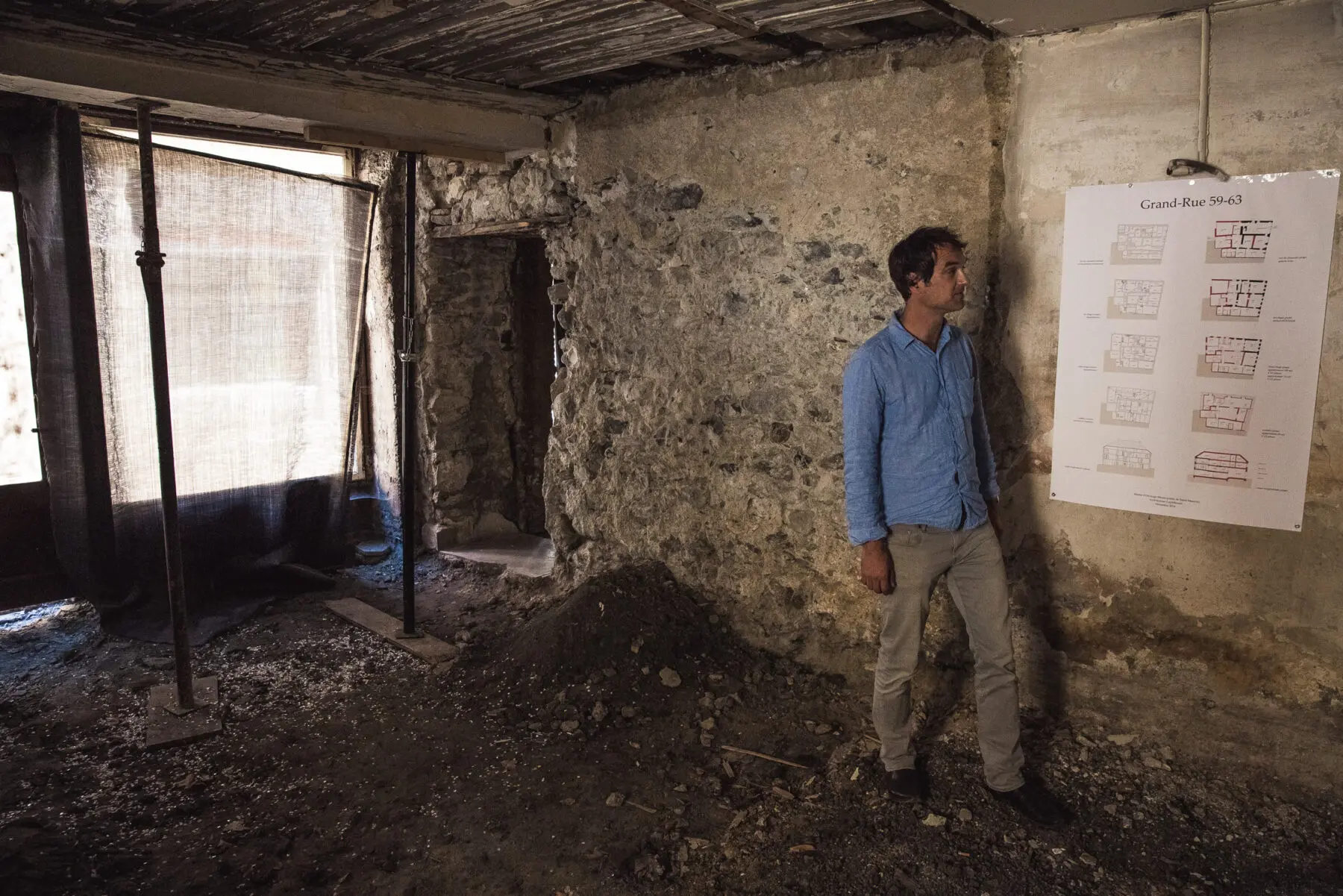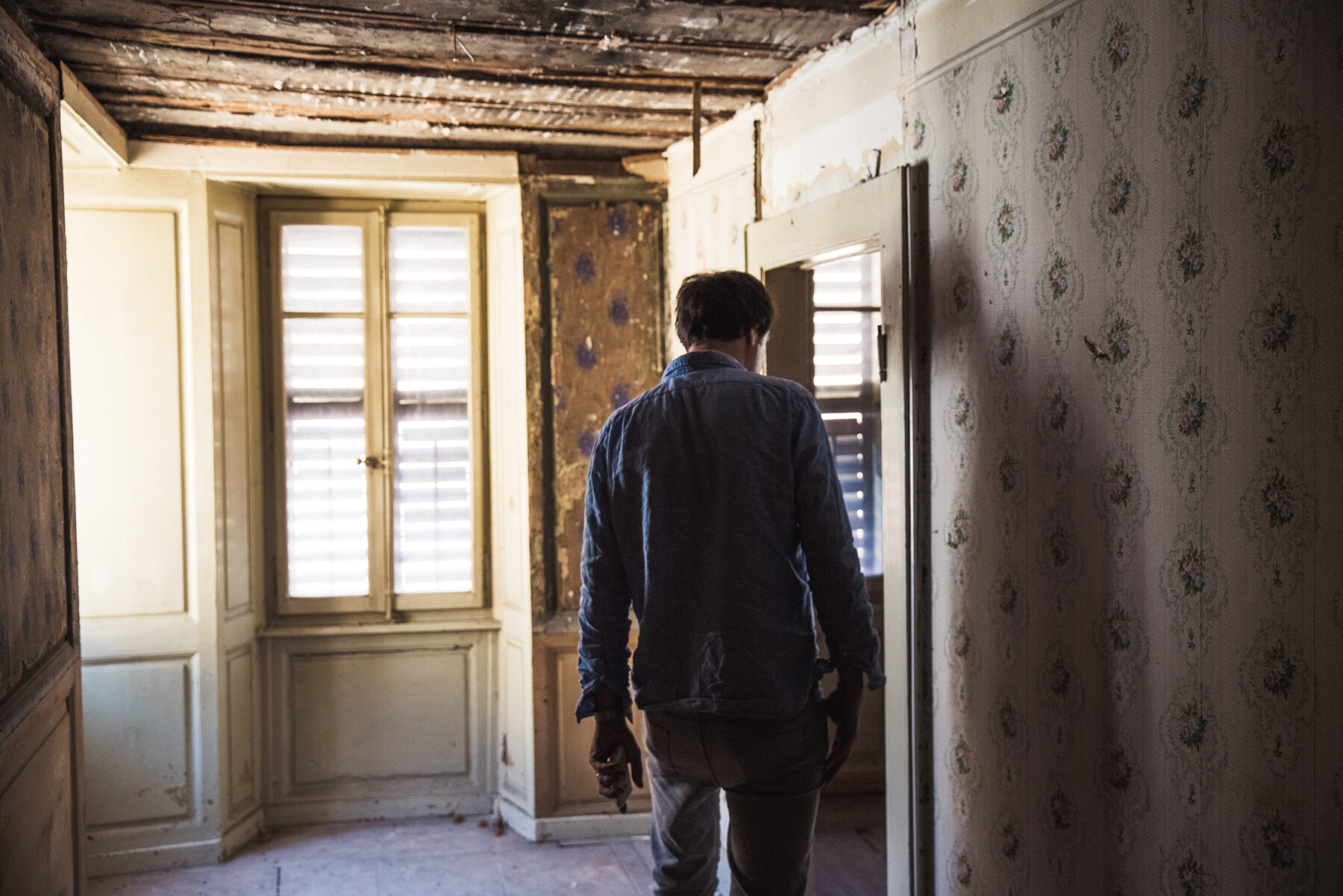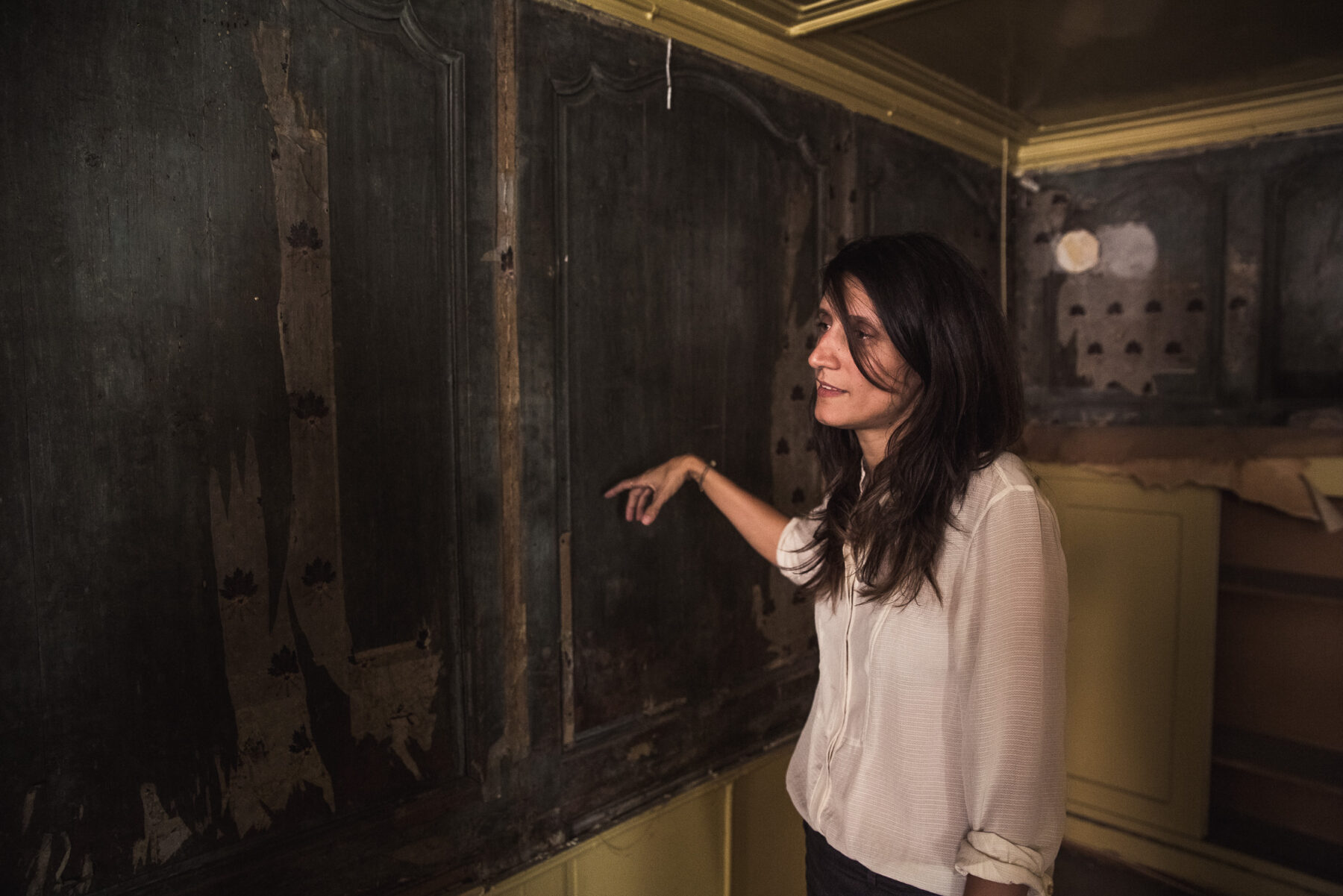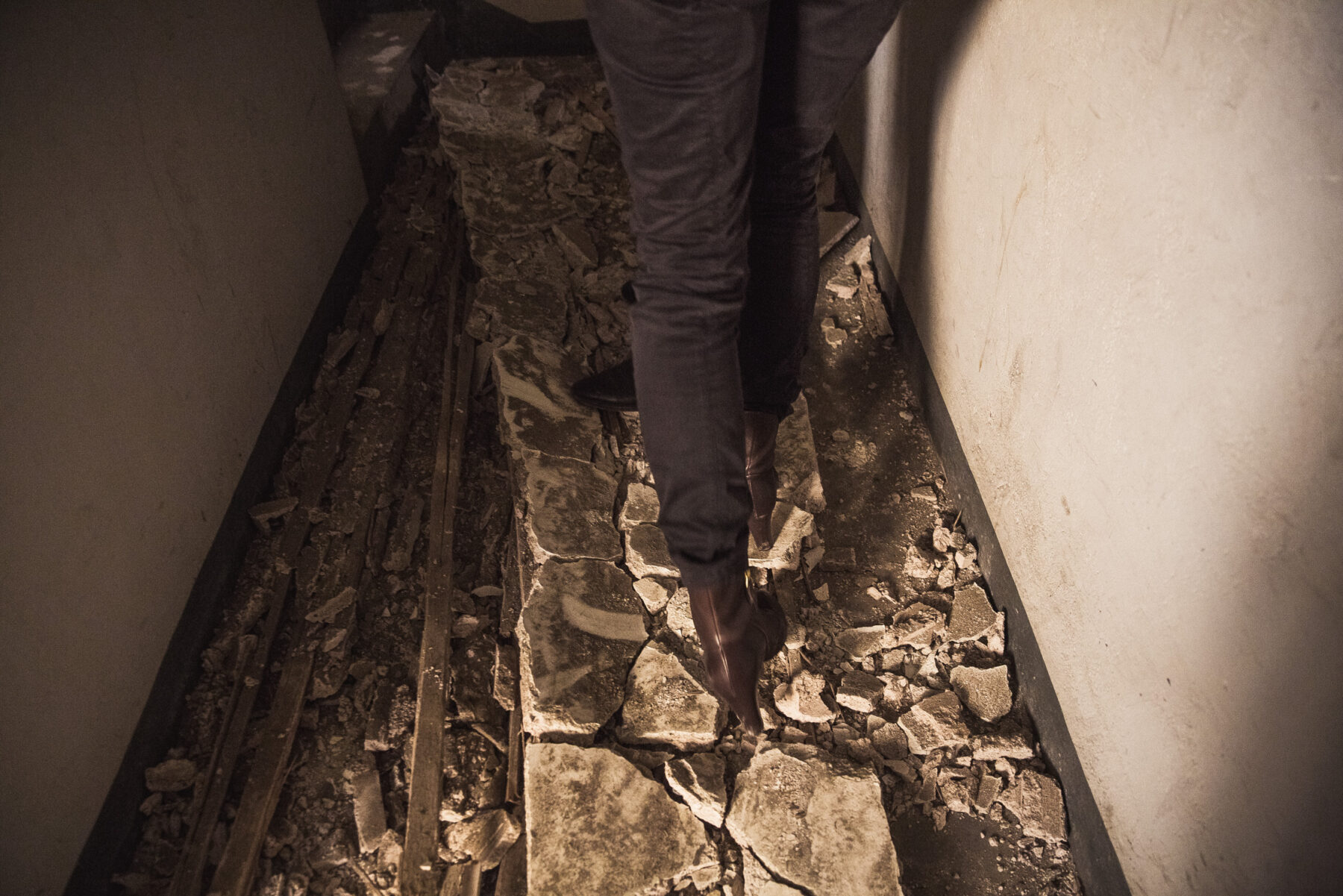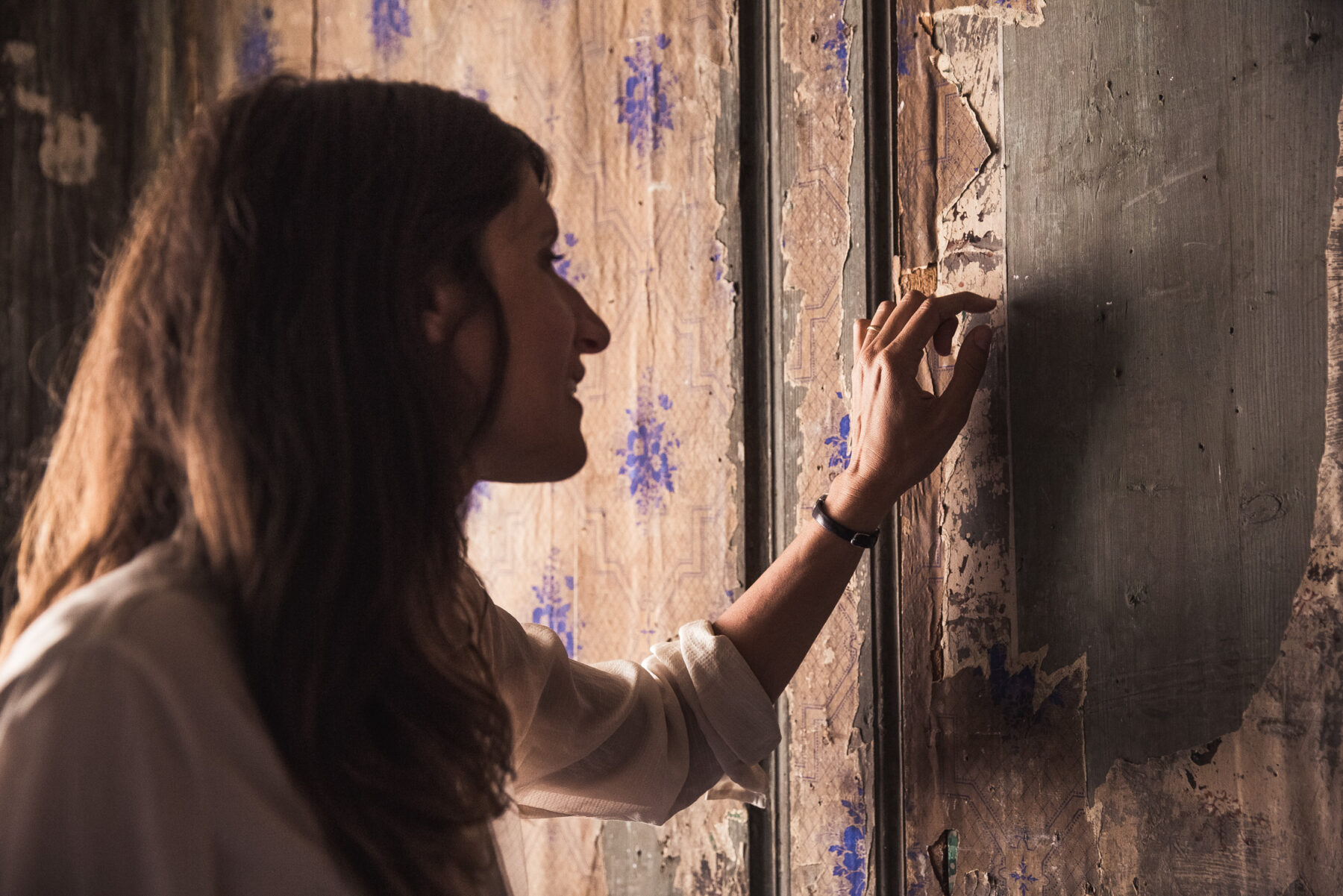The promise of travelling to Saint-Maurice was reason enough. From their home, part of an 18th century patricians house, the pair of architects Catherine Gay Menzel and Götz Menzel look directly onto the mountains.
A patio lined with pillars, from an open and curved stone staircase, leads up to Catherine Gay Menzel and Götz Menzel’s home. The native Hamburger and the woman from Lower Valais live there with their two children, in a house not far from the Saint-Maurice Abbey. Five years ago, the family moved to this small Valais town. Catherine removes some smooth leaves from the courtyard garden and points out a neighboring bare bush that she wants to do up again. The small green haven is her favorite place.
It is pleasantly cool and calm behind the huge stone walls on this hot summer day. The large, open window in the living room gives Catherine and Götz a clear view of the mountain range. There is something isolating about this place.
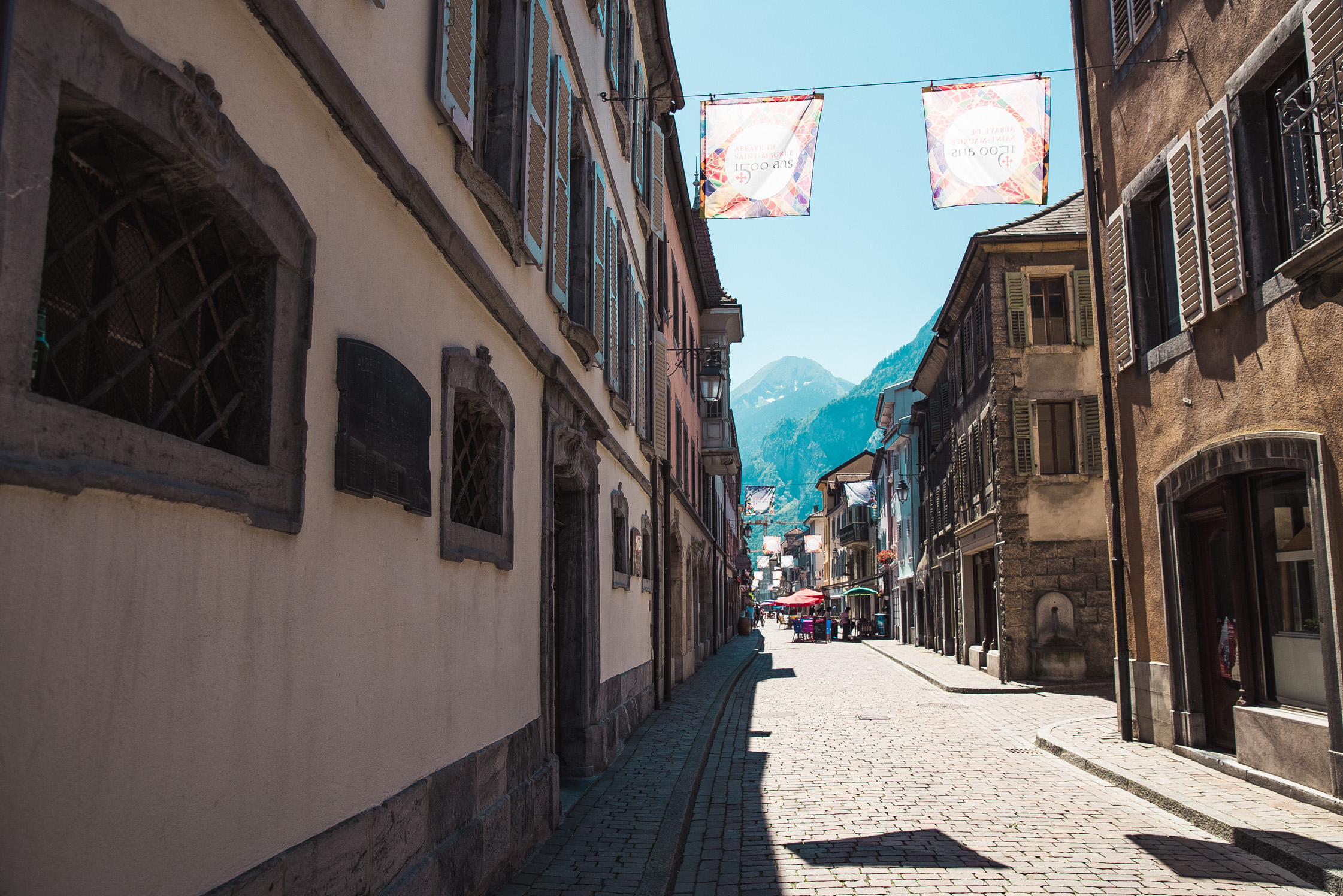
The children greet each other on the street with a “Bonjour”.
The couple, who studied architecture in Stuttgart and Zurich, met each other 17 years ago during an exchange to Lausanne. After their graduation, Catherine began work at Hans Kollhoff’s firm in Berlin while Götz moved to New York. Three years later, Catherine followed him.
Having married, they returned to Europe together, moving to Basel. There, Götz acquired a position at Herzog & de Meuron. He worked for the prestigious Swiss architecture firm on the building project for the Elbe Philharmonic Concert Hall in Hamburg, his birthplace. In 2009, he finally came to Valais and here, he and Catherine founded their own architecture firm. For two years, they’ve managed their company, GayMenzel, in Monthey, the neighboring municipality.
This portrait is produced together with USM for the series “Personalities by USM.” See a different angle to this story with a focus on Catherine and Götz’s interior here.
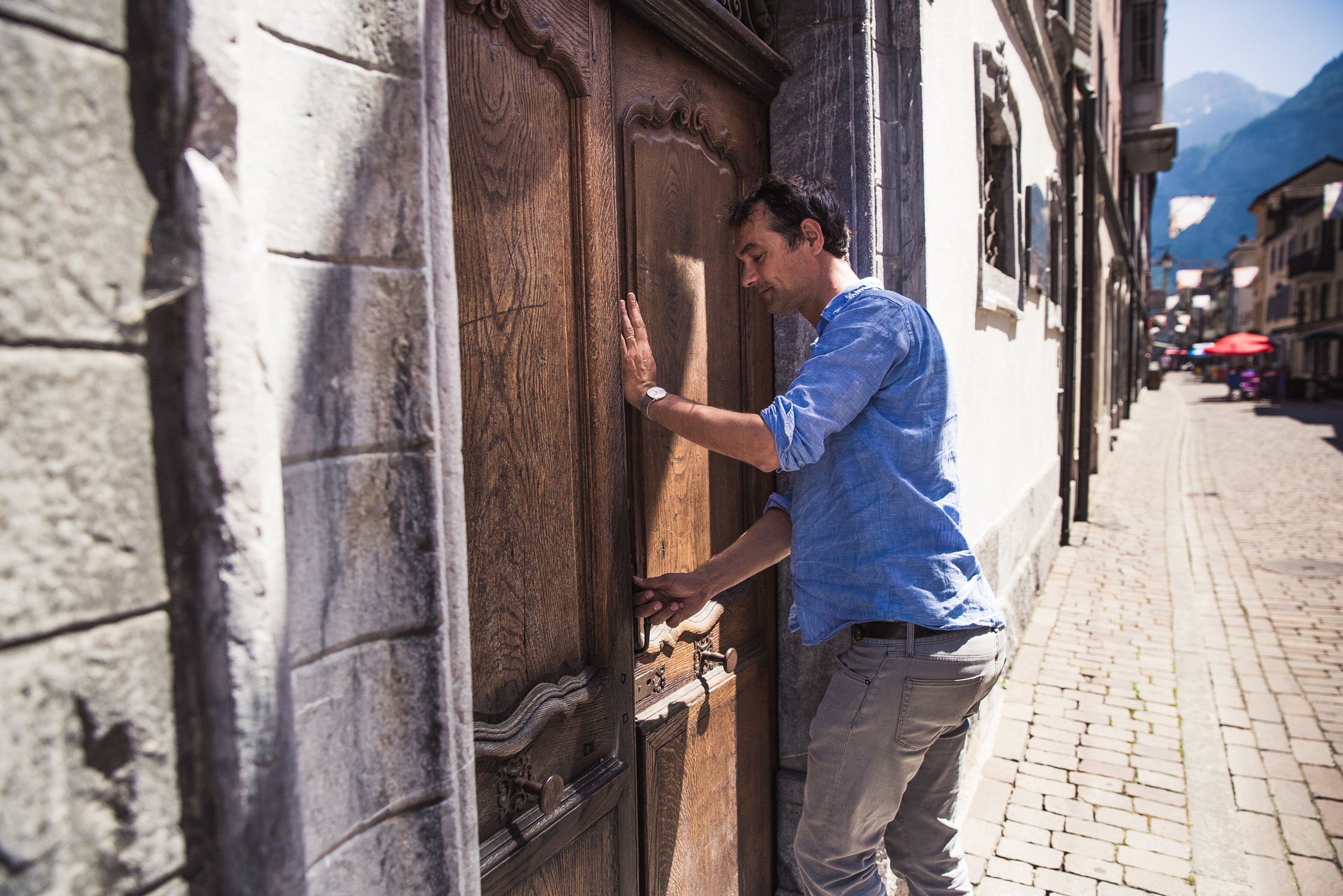
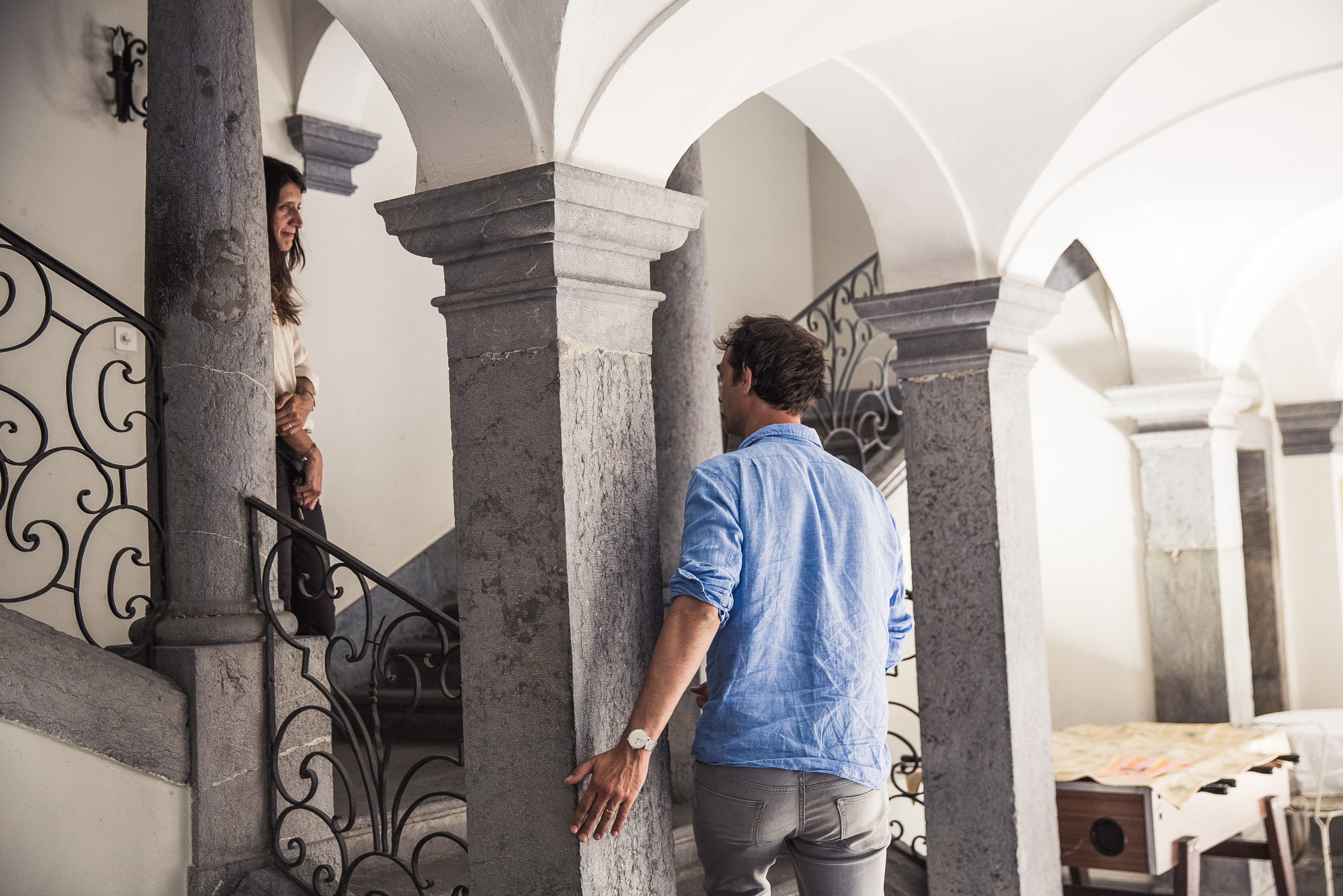
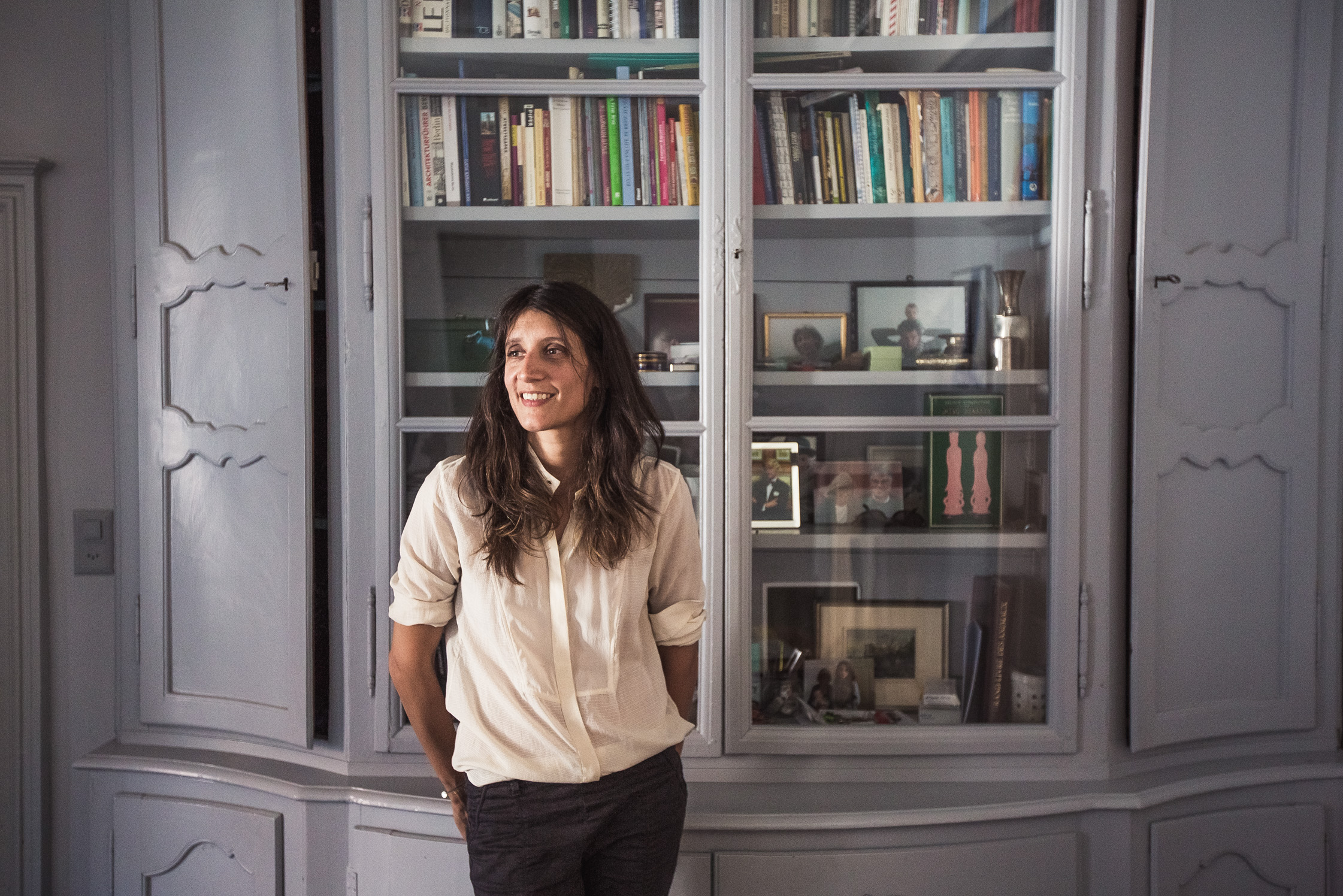
-
You’ve lived in Berlin, New York, Hamburg and Basel. How does one come to be living in the small town of Saint-Maurice, with around 4000 inhabitants, after such a world tour?
Götz: The deciding factor was our wish to open our own architecture firm. It made a lot of sense to us to try it here in Valais and not in a large city where there would be a lot more competition. Also, Catherine’s father had his own office here. And now GayMenzel has been here for two and a half years.
Catherine: It was a business decision. But, yes, it also worked well for our family. Our children can be at the schools in Saint-Maurice right up until high school graduation. My grandparents live not far from here, and I grew up really near here myself. Also, and this shouldn’t be scoffed at, the weather in Saint-Maurice is very nice.
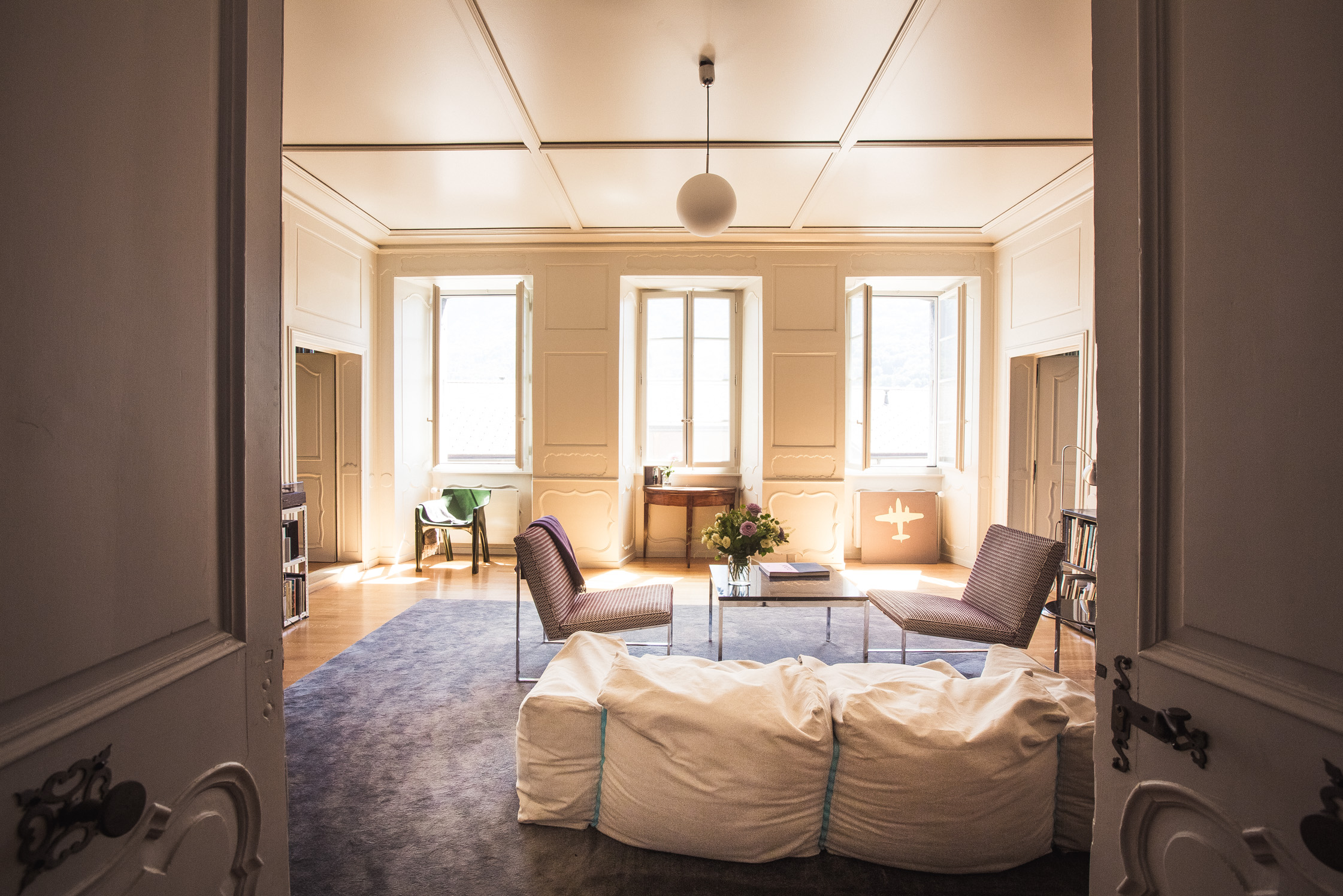
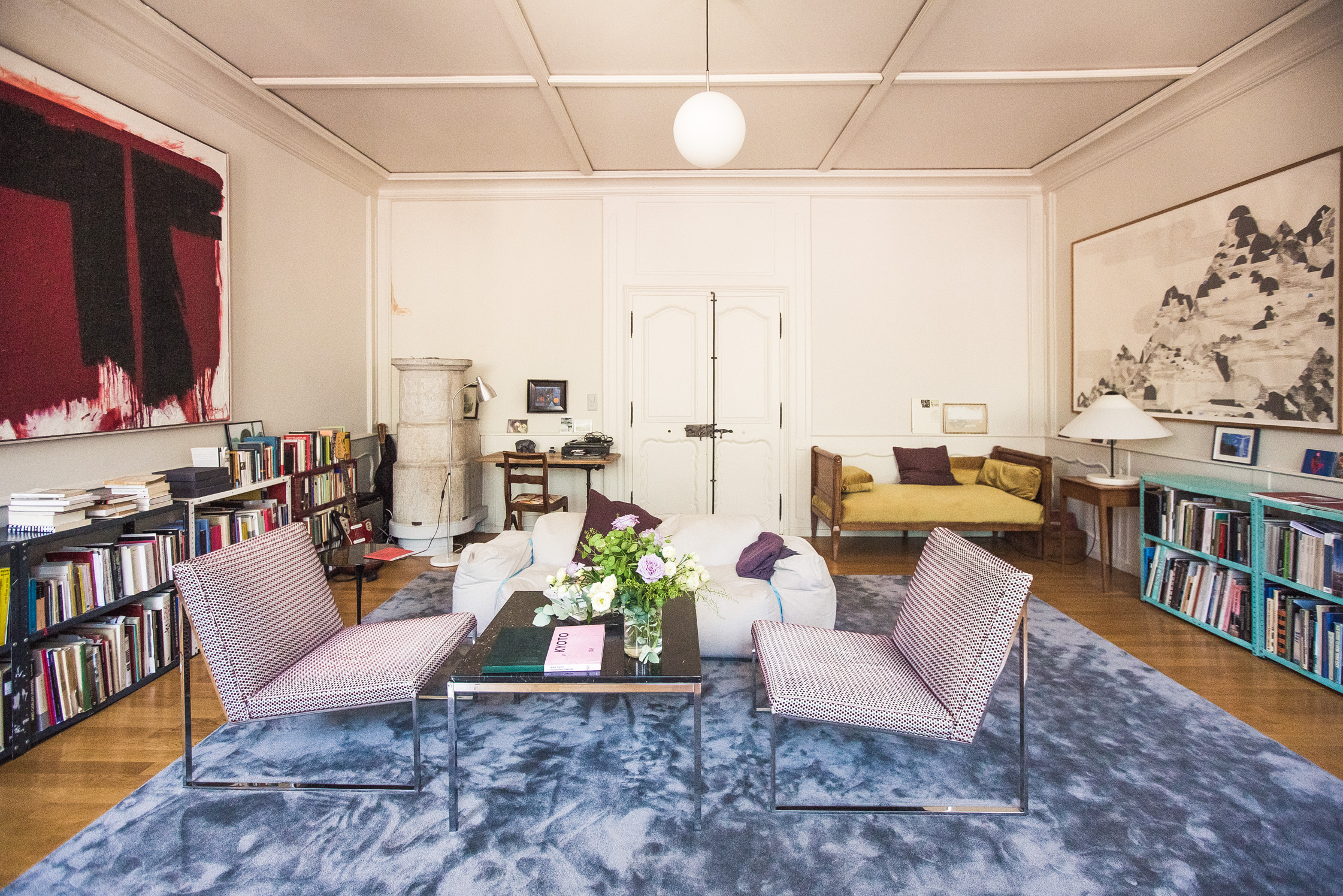
-
You lived in this region for 15 years, and, Catherine, you spent your childhood here. But Götz, you actually come from Hamburg. How is it for you to now both live together in Saint-Maurice?
Catherine: You have to, in a sense, start again from nothing. But Saint-Maurice has an urban structure and you also can easily come in contact with different people – everyone from the mayor to the janitors,we’re all in close proximity to each other. In the cities where we used to live people often exist in these little bubbles among their peers. We have a broader environment here, which I also think is brilliant for the children. Nevertheless, living as both a self-employed architect and a mother isn’t exactly a very common thing here.
Götz: I like living abroad and speaking other languages. But you can live really well here, especially when you take into account the whole region. The so-called “Arc Lémanique” spans from Geneva, a place both for dynamic business and culture; and it continues down the coast to the Geneva lakes and along to Saint-Maurice. The Swiss trains are so reliable that you can easily travel to Lausanne for an evening preview.
The reason for our move was neither fleeing city life nor was it a romantic ideal to have the children grow up surrounded by nature. Obviously, the differences are immediately apparent, if only because the children greet each other on the street with a “Bonjour.” You also develop a different understanding for nature and natural landscapes, which in turn has informed my work as an architect. The feeling of anonymity one has in a metropolis simply falls away here.
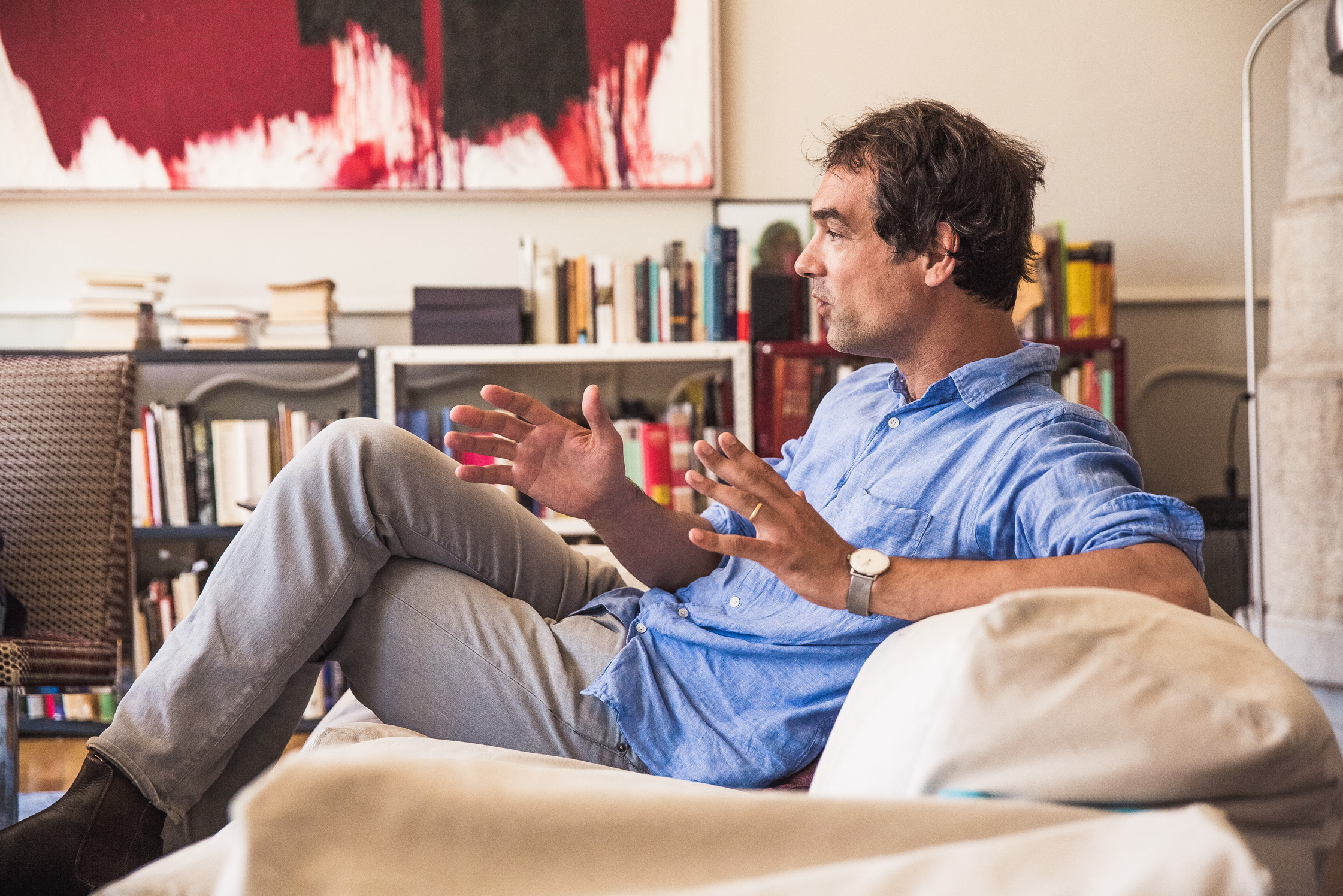
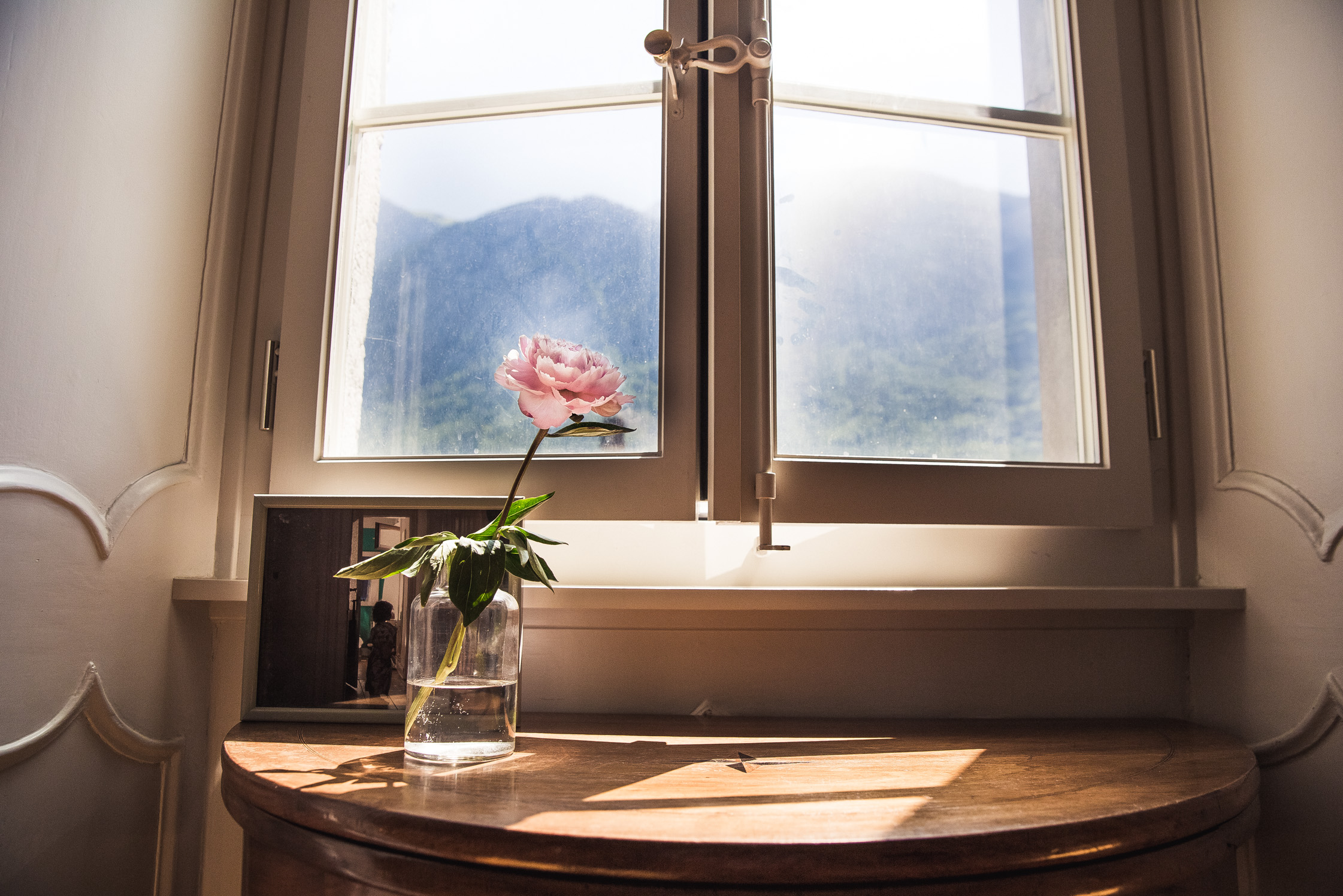
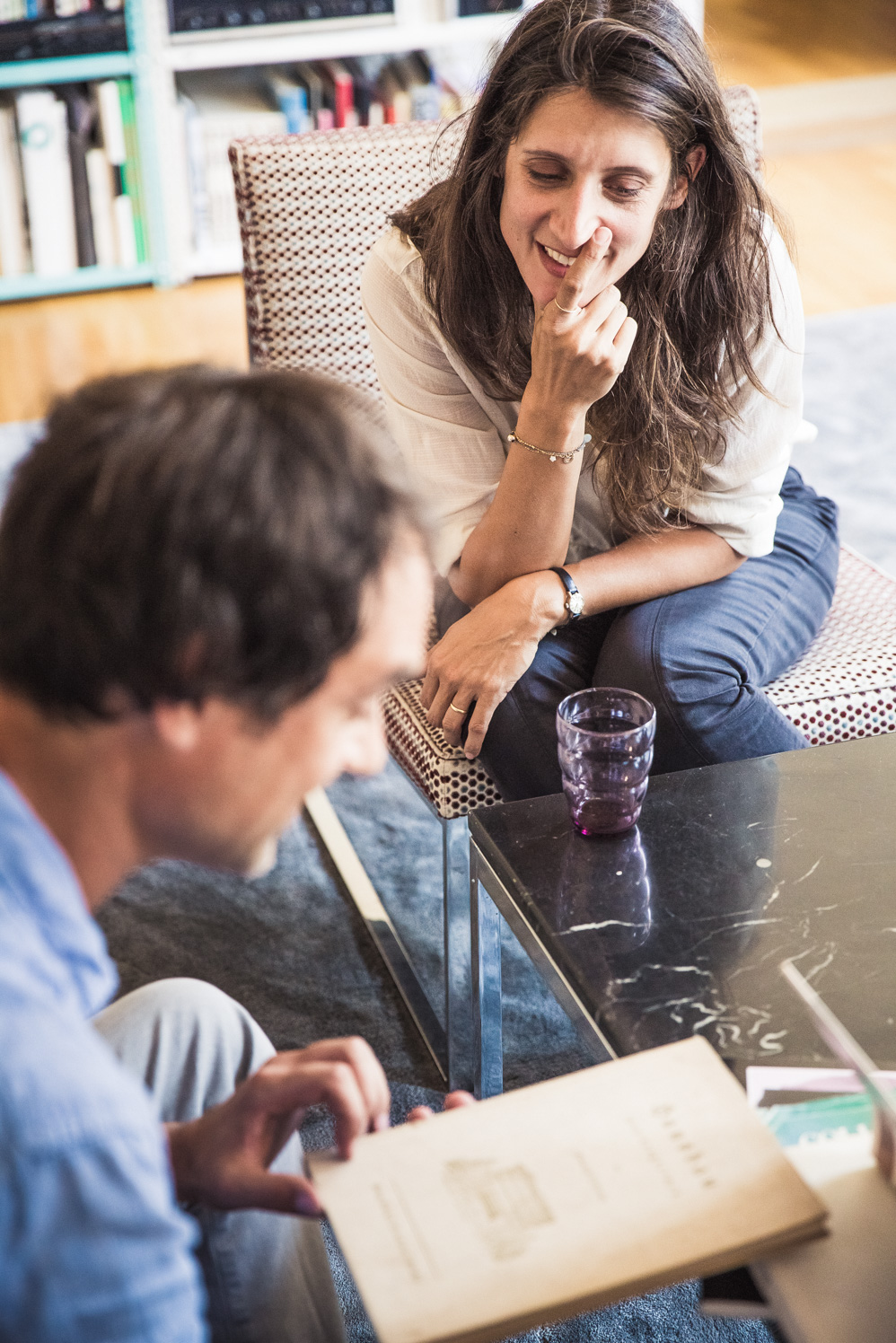
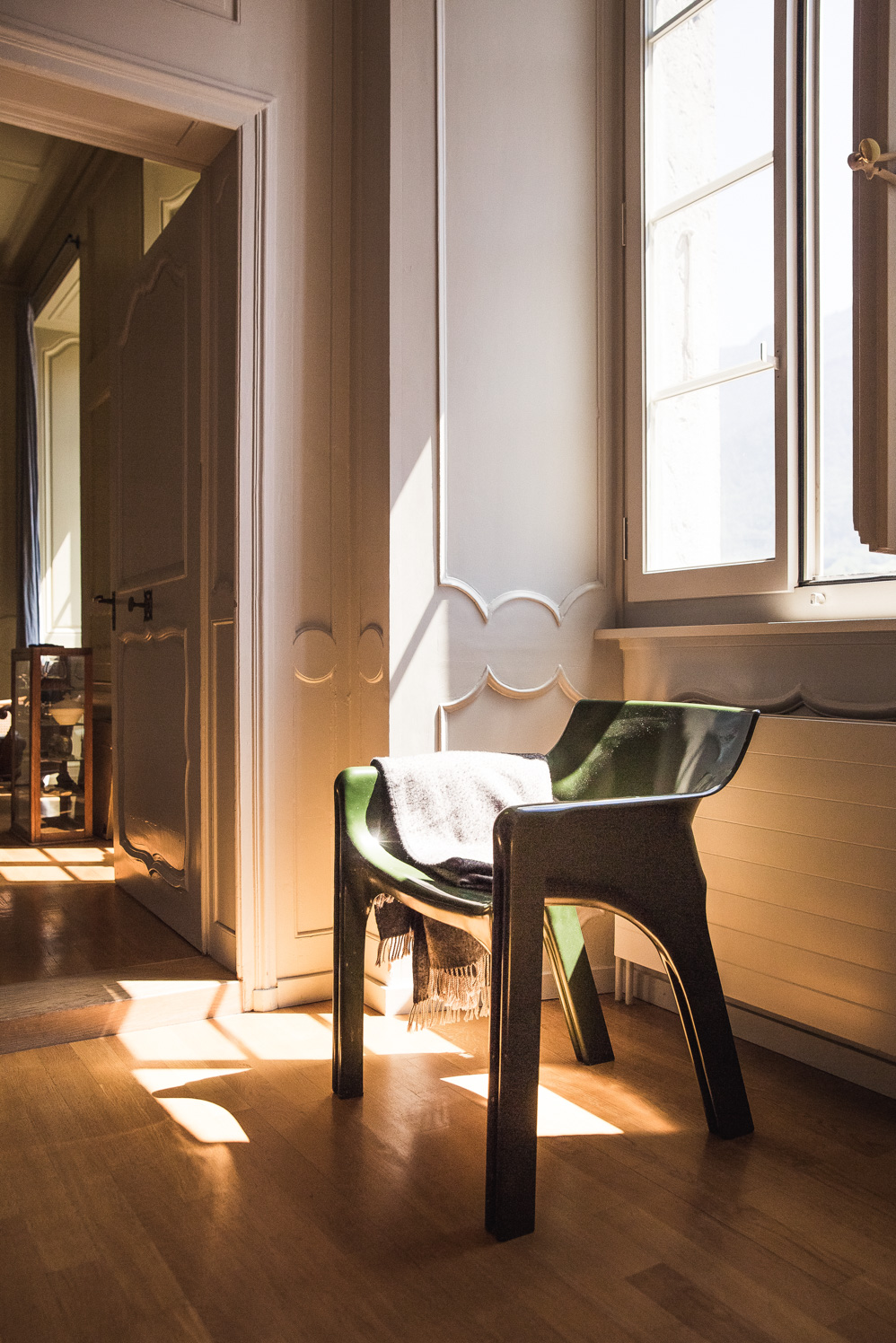
-
Do you sometimes miss that anonymity?
Götz: Not the anonymity per se, but what is so clearly absent is the constant input that you receive in a place like New York. Now when we are traveling, we bring a lot of books and impressions back home and then feed off the experience for a little longer.
Their decision to leave New York and to move back to Europe was strongly driven by a desire to build something for themselves: “In New York, we gained a lot of experience with interiors, but we wanted to develop whole buildings,” says Catherine Gay Menzel. In their departure from the USA, the couple brought almost nothing back with them – except for the two chairs which Catherine had made to her own design in North Carolina. The chairs are now sitting in their living room.
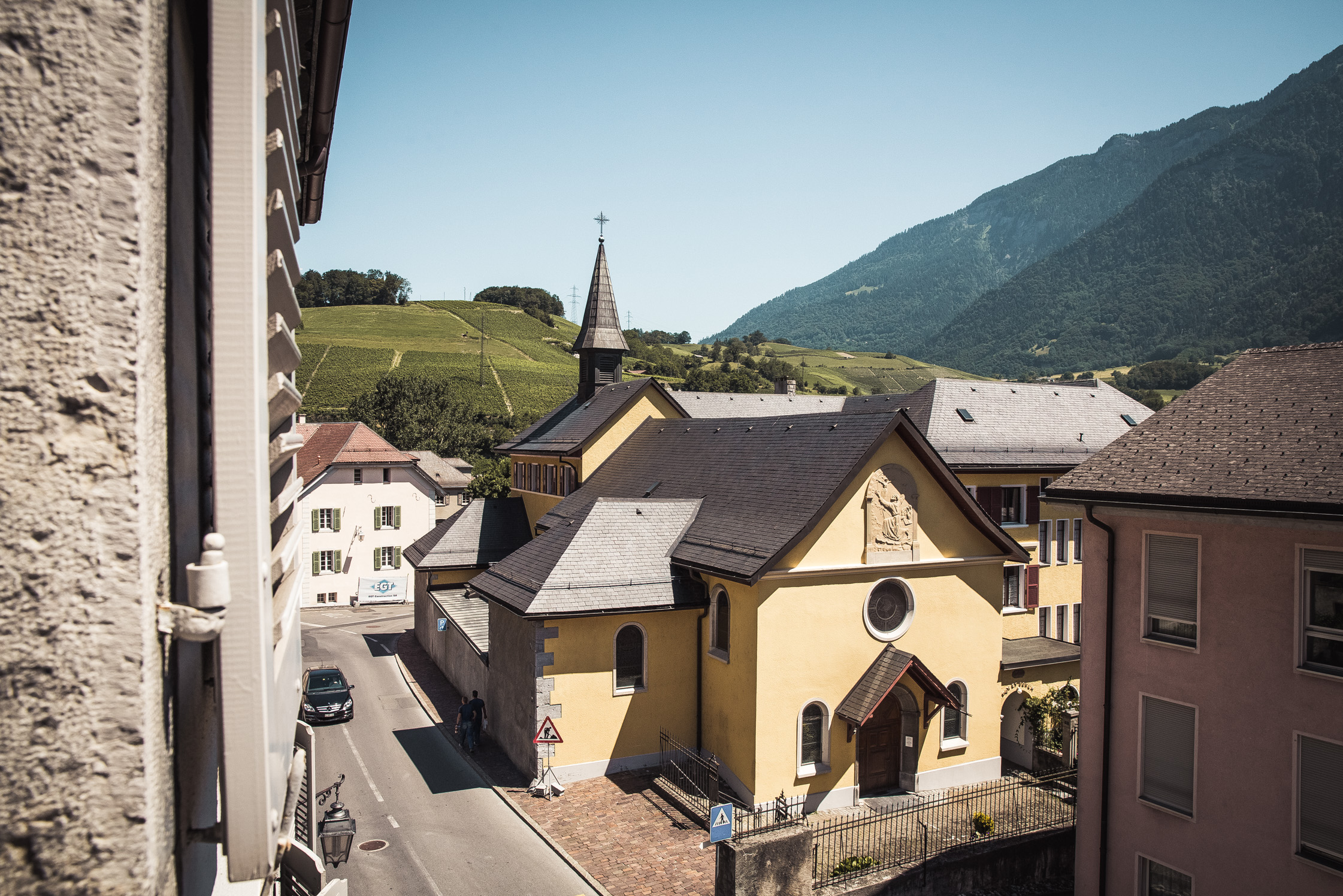
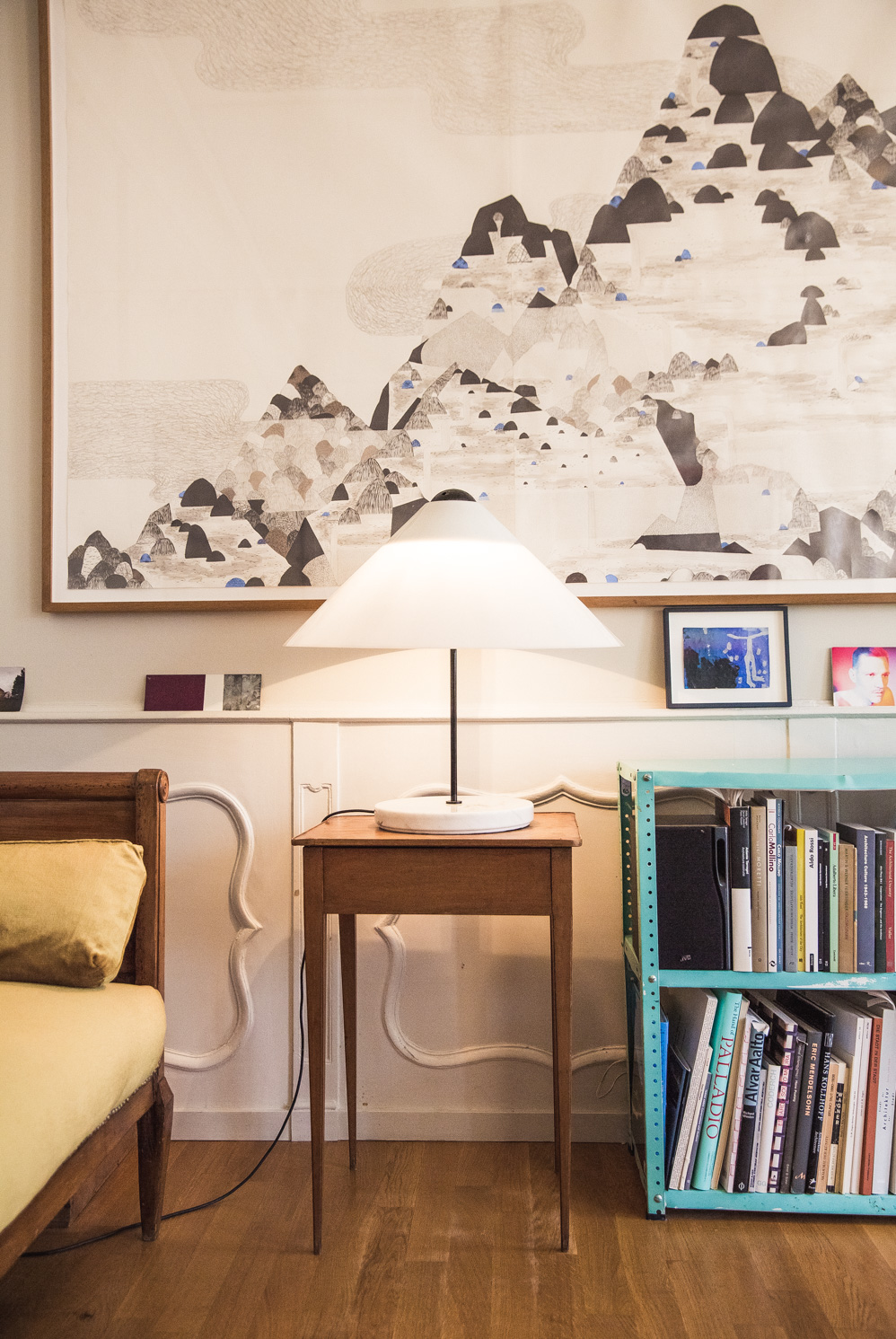
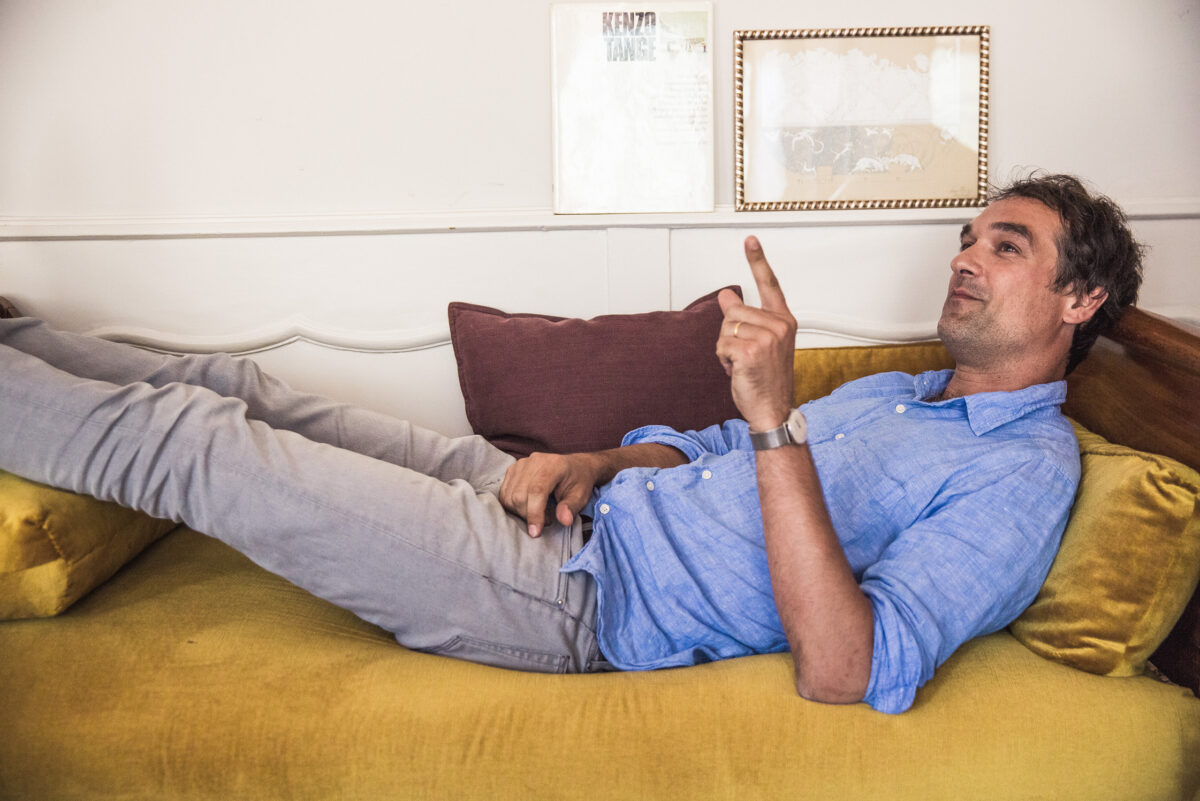
-
We are surrounded by heirlooms, a lacquered Magistretti chair and large paintings. How would you describe the style of your furnishings?
Götz: We like to mix different styles but our favorites are often from the post-war era. I like elegant design, nothing too conceptual. I really like our wooden side table, which was a gift from our neighbors; the long, skinny legs give it some character.
Catherine: We are a bit more cautious with new furniture. It’s important that a piece of furniture has grown coherently and that it can still grow. That requires time. For five years, we’ve wanted to buy a new lamp for the living room but finding one doesn’t really come easily.
Götz: For the living room, we acquired the sofa that has individual, removable parts in Basel. Everything had to be transported up three floors and up a small, spiral staircase.
The bookcases are from a DIY store and I lacquered them myself. The man from the removal company laughed about the fact that we wanted to take the bookcases with us but I am very attached to them. The rug in the living room is carpeting direct from the roll and cut for us.
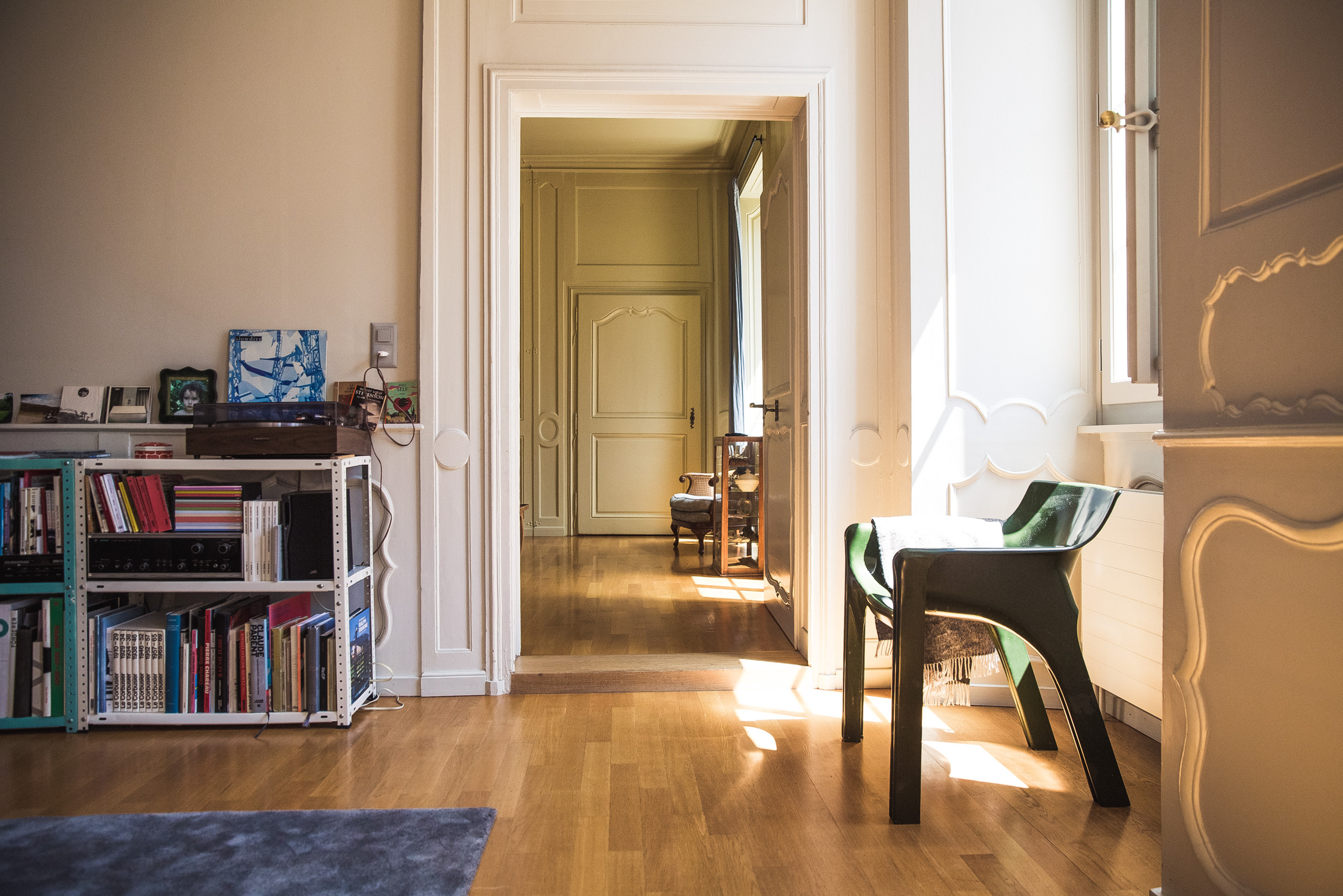
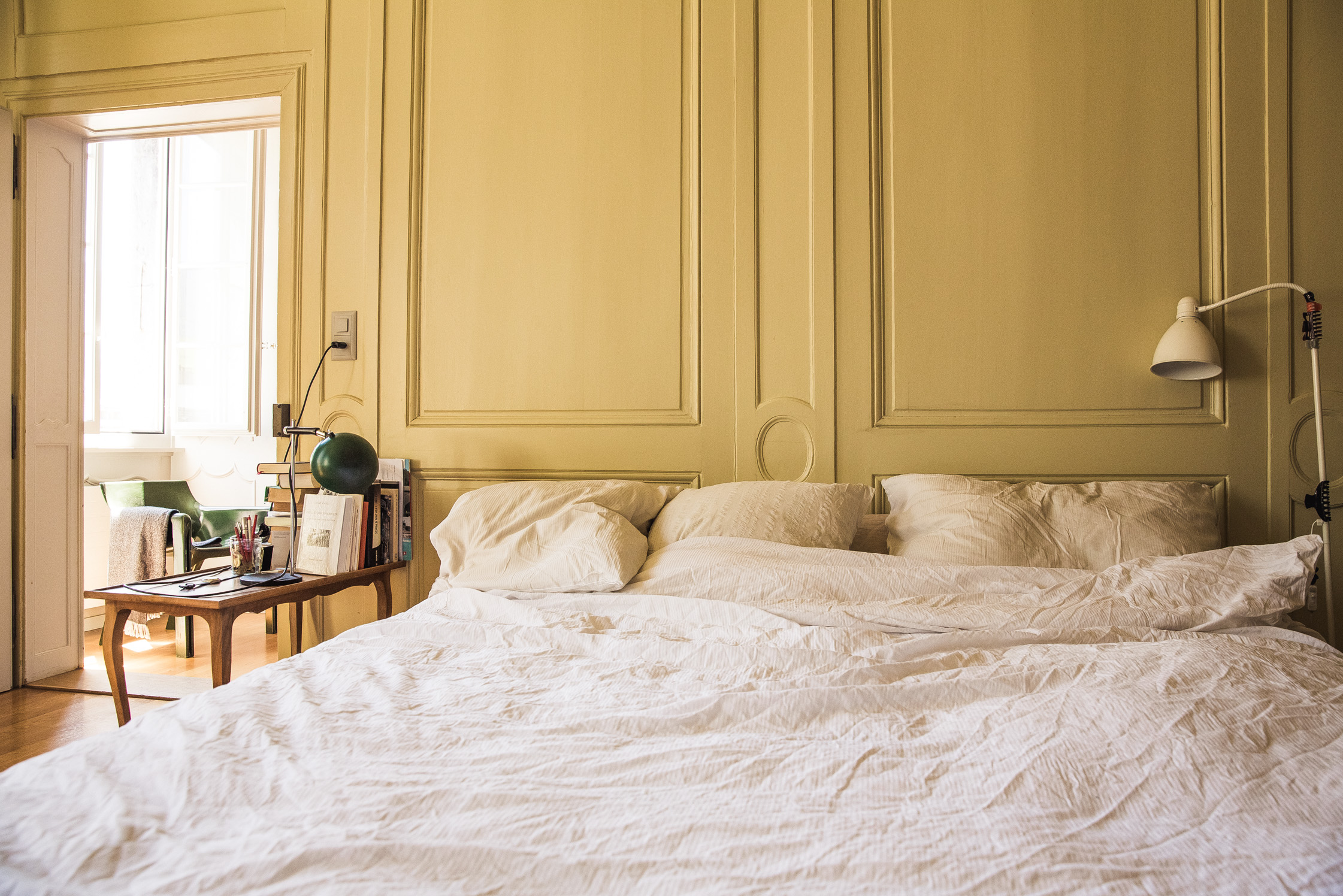
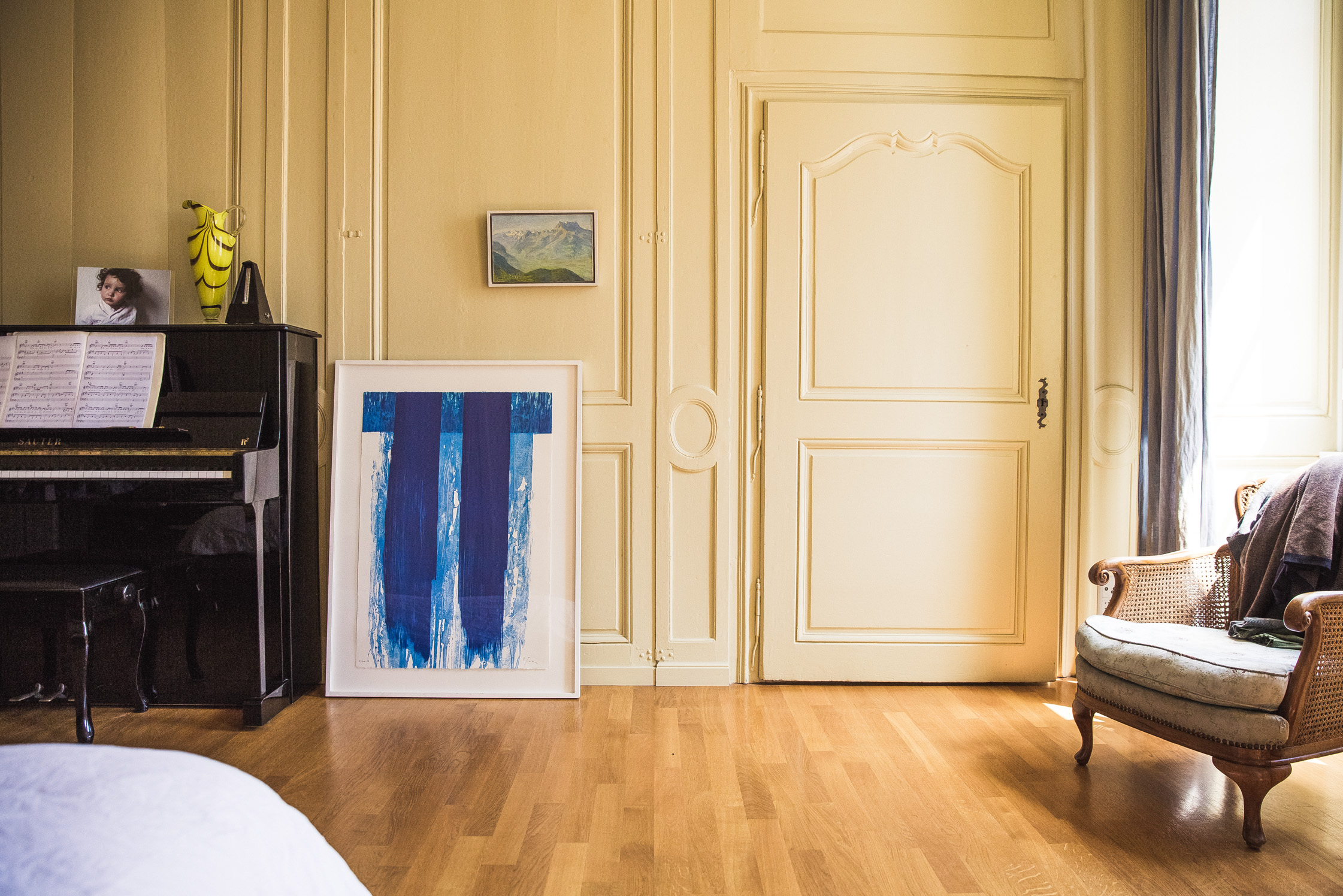
-
You have a lot of art. Whose work is on the wall?
Götz: The really abstract one with the rough sand surface is by the Valais artist, who died at the start of this year. The other work is a sketch by the American artist Benjamin Degen, in graphite and gouache.
Götz Menzel loves books. He collects architectural volumes, especially out-of-print or rare editions, which he finds in antique stores, bookshops or garage sales. His treatise by Swiss architect and publisher Werner Blaser about Ludwig Mies van der Rohe is particularly valuable to him: “The high level of research by the Swiss Academy is also reflected in the publications that they produce. As an architect, it is fun for me to immerse myself in my own material.”
Catherine Gay Menzel and Götz Menzel work in a large bandwidth for such a small architecture firm. They design factory buildings, road bridges, family homes and public spaces. Just a few steps from their home, directly on the main street of Saint-Maurice, you can see their current project, Maisons Duc. They are creating three historic buildings here which will house an art gallery, studios and apartments. On the way to their office is another one of their designs: the Hasler Hall. GayMenzel designed the Hasler business, a modern DIY market in this 2000 square meter space. Also, if the region looks back on its long history, there is no fear of change here.
-
You’re working with very different agencies and in very different countries. Which experience do you think has profited your own business the most?
Catherine: I have particularly taken a lot away from our work with small firms, in terms of their self-sufficiency. In New York, we were only four people and had to do everything ourselves, from buying paper to answering the phone.
Götz: For me, Herzog & de Meuron was like a second education. There I found a really unique intellectual freedom and the openness to unorthodox designs. I like to compare their campus in Basel with Hogwarts, the school of wizardry in Harry Potter.
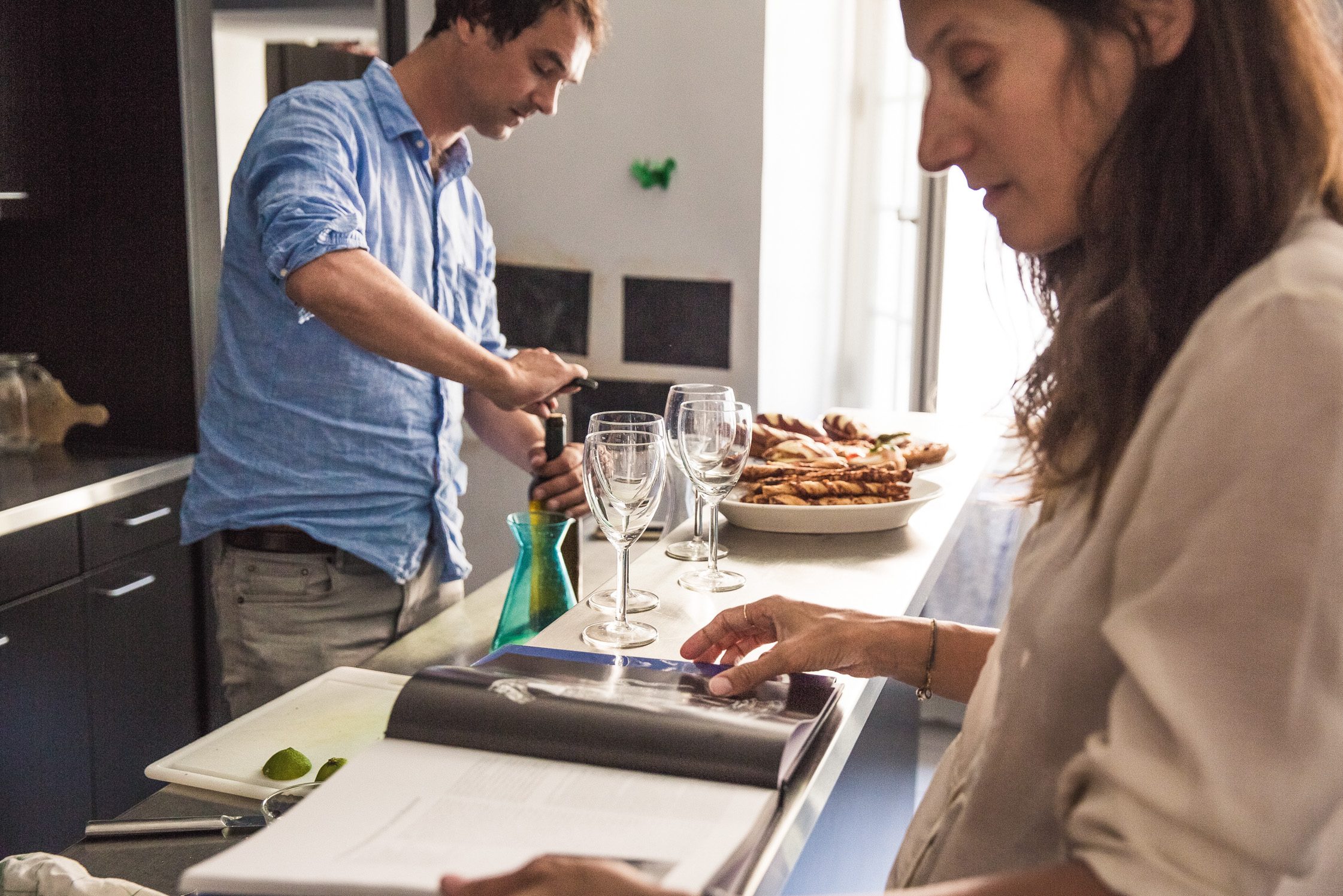
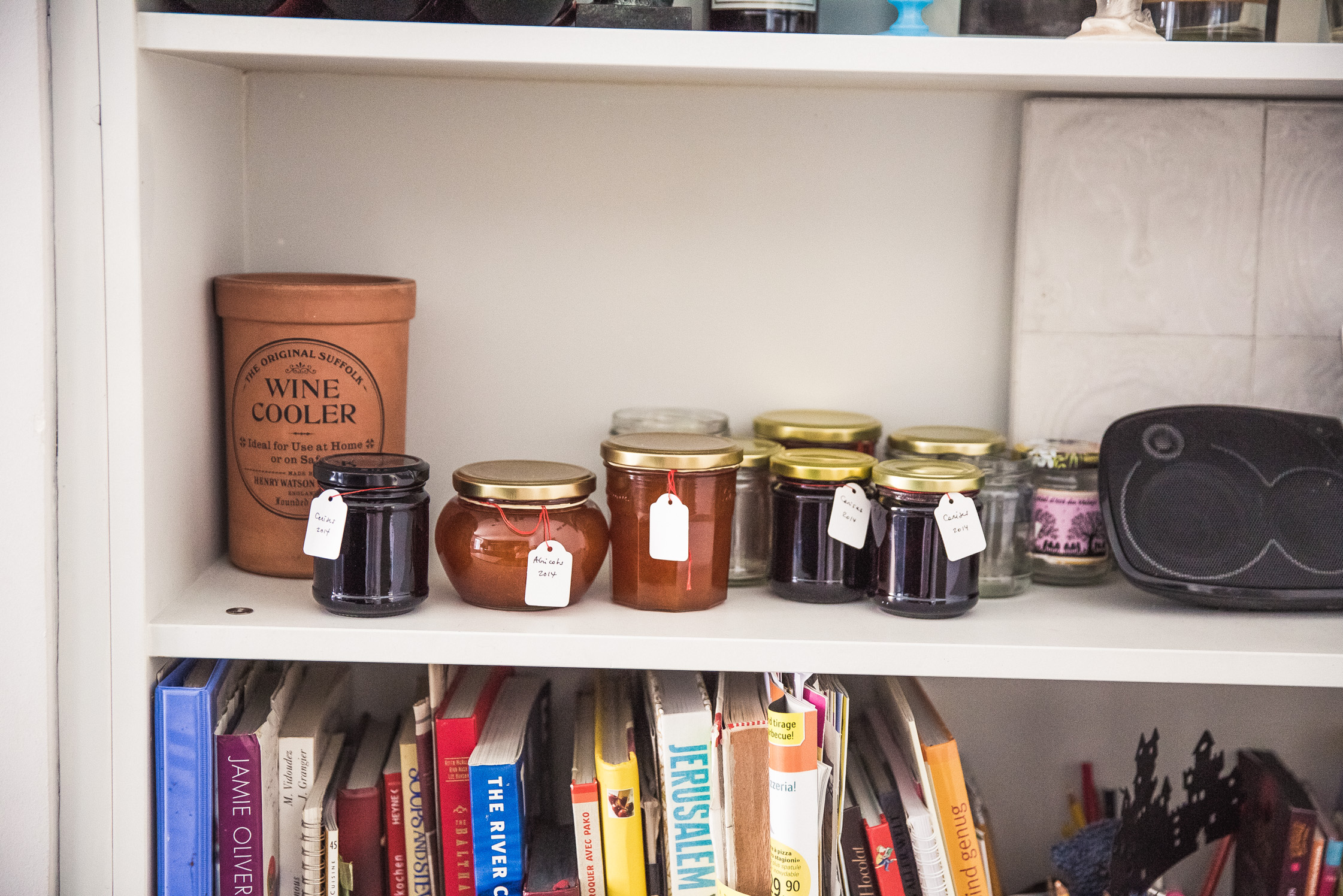
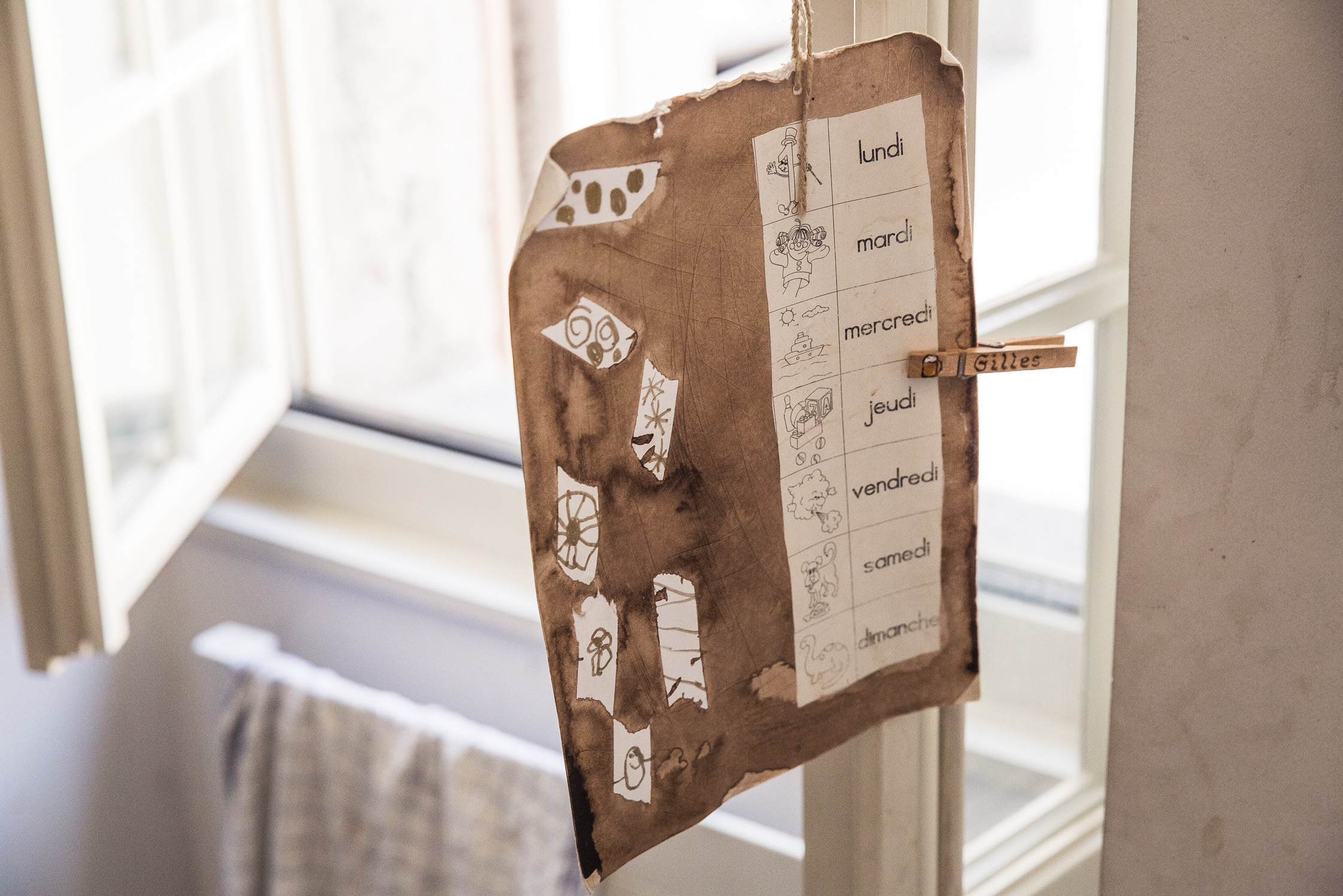

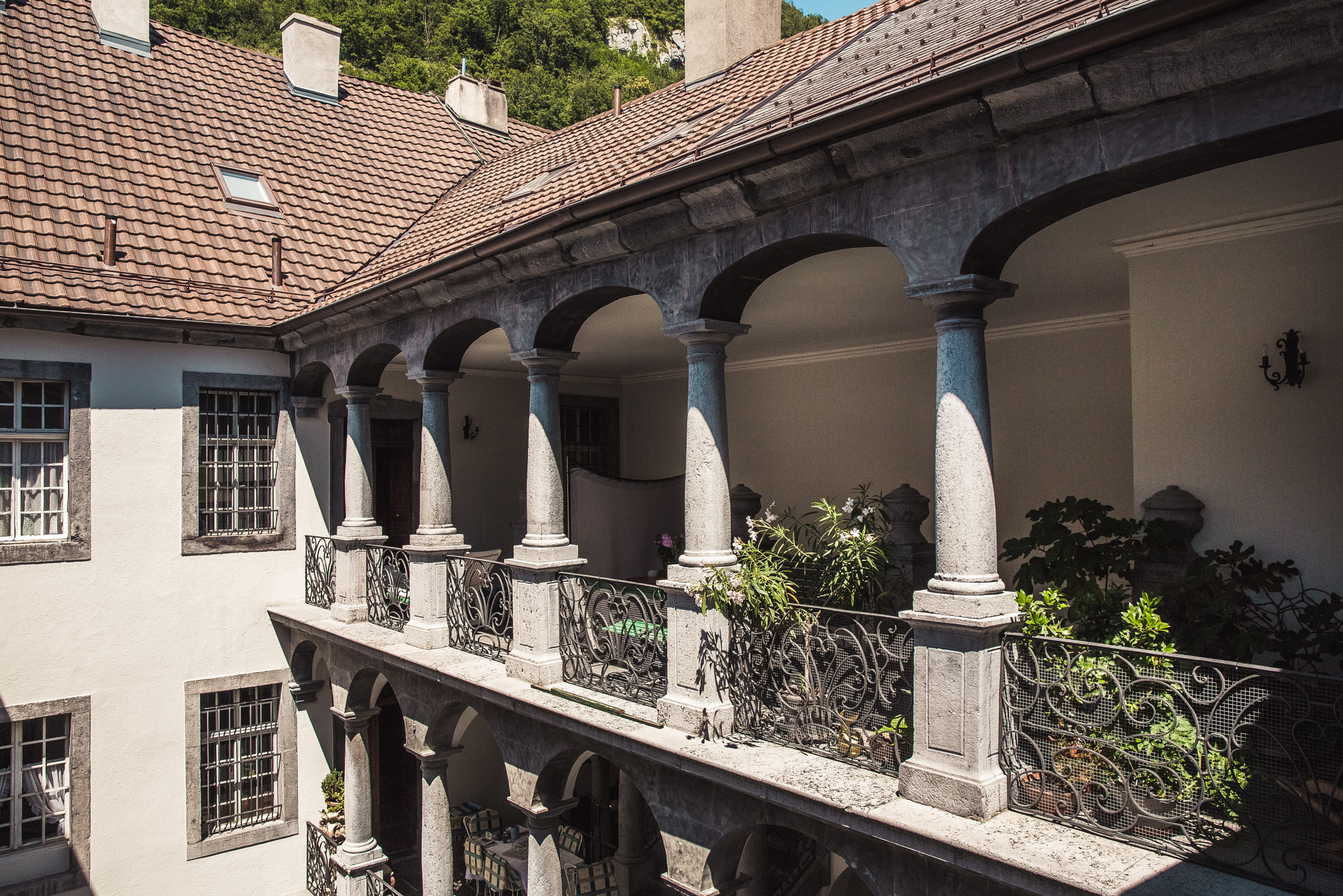
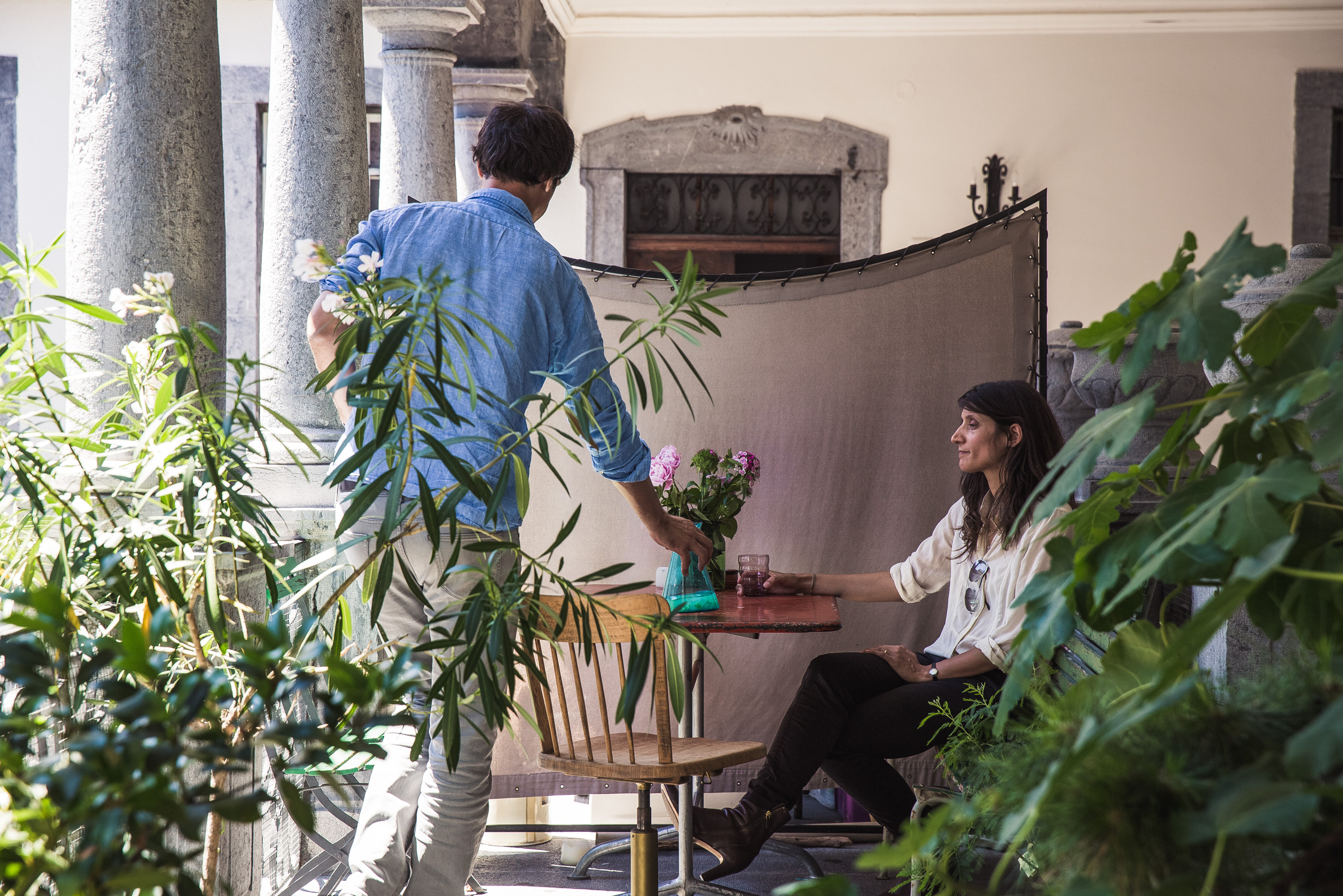
-
As architects, do you bring a new perspective with you to Valais?
Götz: As a foreigner, I can look at what already exists with new eyes. Our international background always influences our designs but the execution is a story for Valais. We crystallize our ideas specifically to the given context. We are not an uncompromising, ultra-radical firm that wants to suddenly do new architecture like Zaha Hadid.
Catherine: We have a “gentle” approach when we set out on a new project. We look at what already exists and attempt to develop some coherency. Often, we also don’t design right up until the endpoint, but instead, deliberately leave something open, which can then be more clearly defined through the execution of the project with the craftsmen and developers.
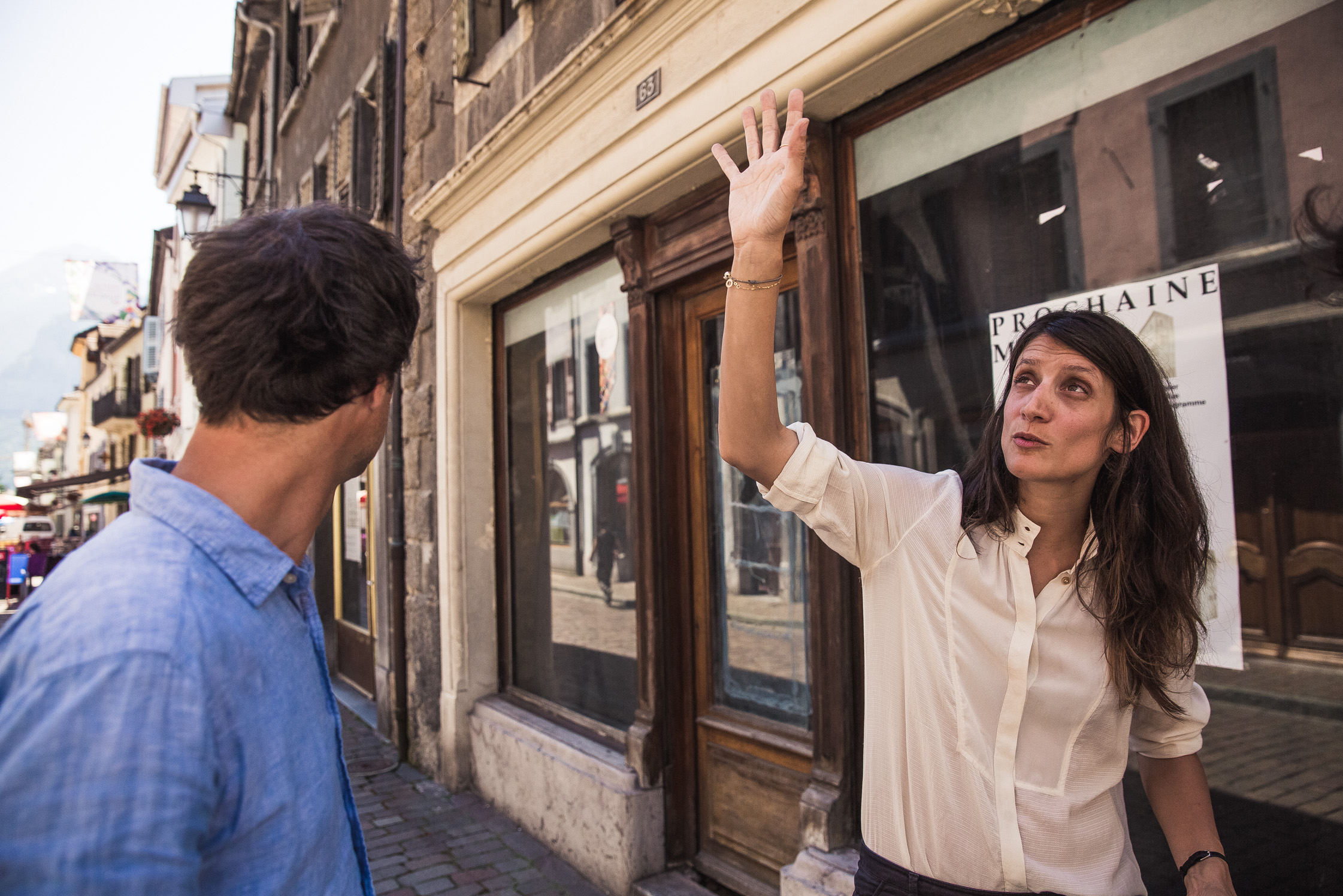
-
Do you have a clear division of work?
Götz: We do the designing together and divide up the execution of the project between us. We both do everything but, that being said, we are able to work in a flexible manner. We have been together 17 years, in which time we have developed a common language. One immediately understands what the other is thinking – which is not to say that we are always in agreement!
-
What is your experience of the architecture in the region around Valais?
Catherine: Very varied. On the one hand, it is disappointing when you see how so many big investors build in the cheapest way possible. But on the other hand, there’s a great dynamism among the architects, people know each other here, even across generations.
For this reason, we are often competing with each other. All the public building projects with an architect’s royalty of over 250,000 Franks must be advertised publicly in Switzerland. This system is really good for our industry.
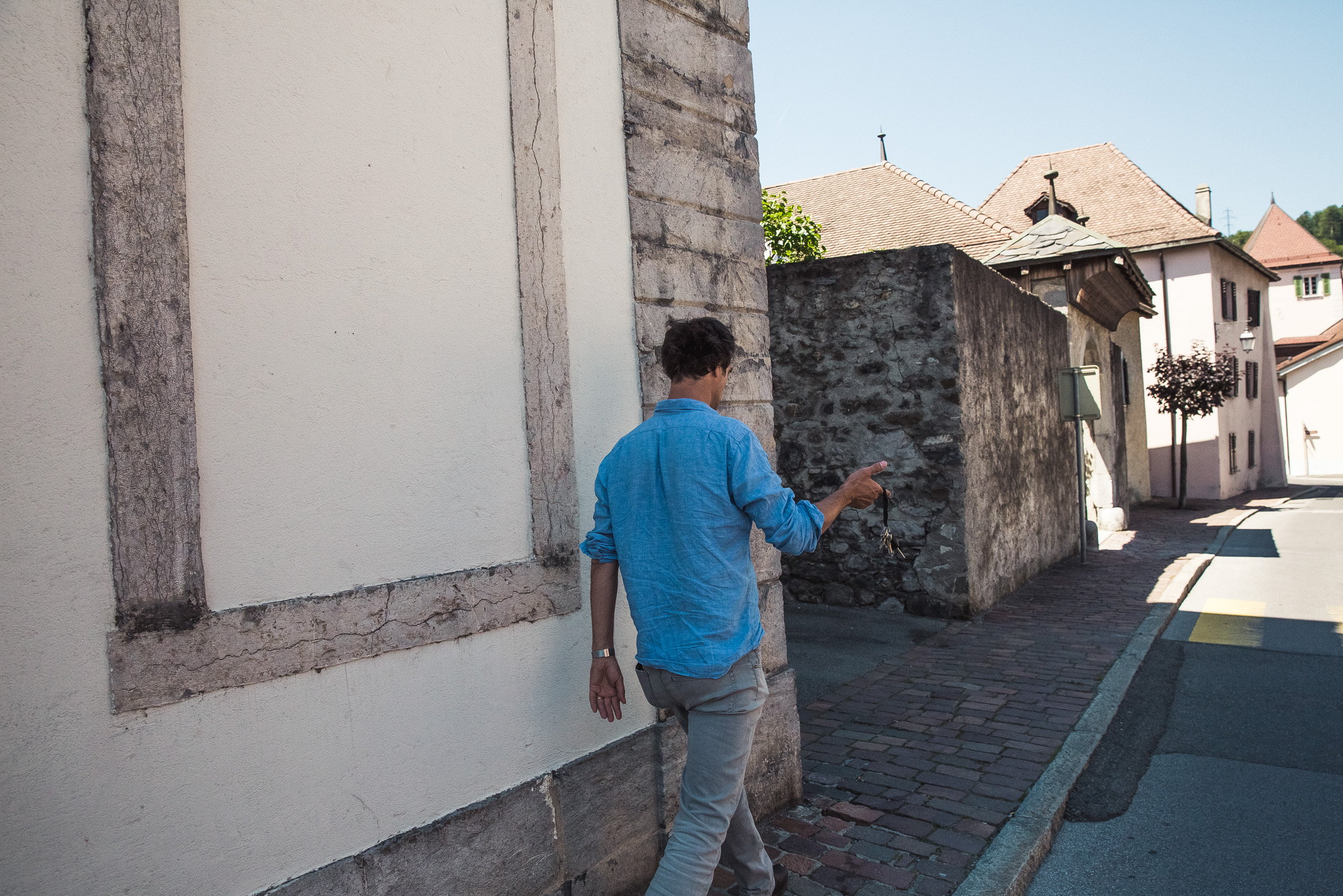
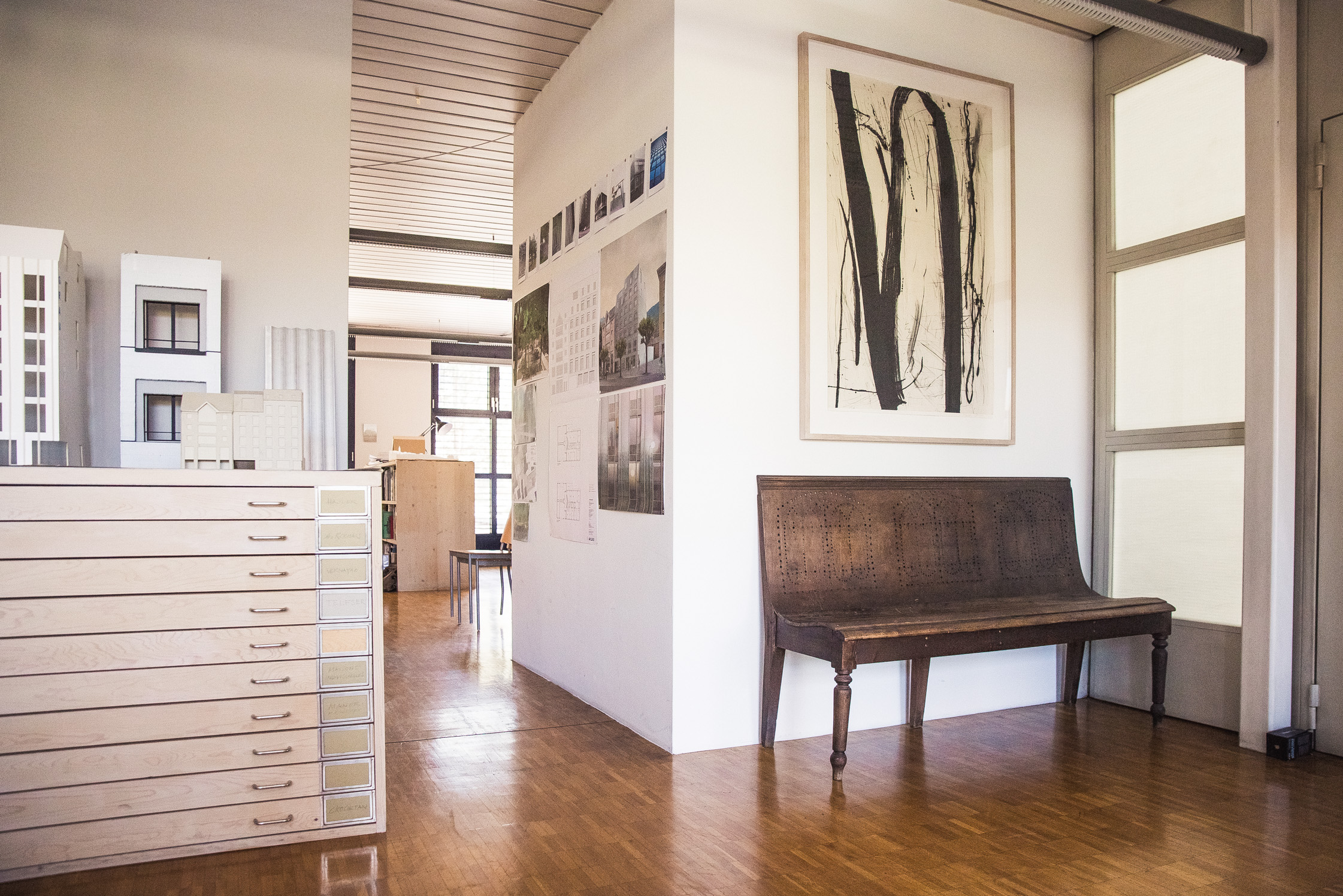
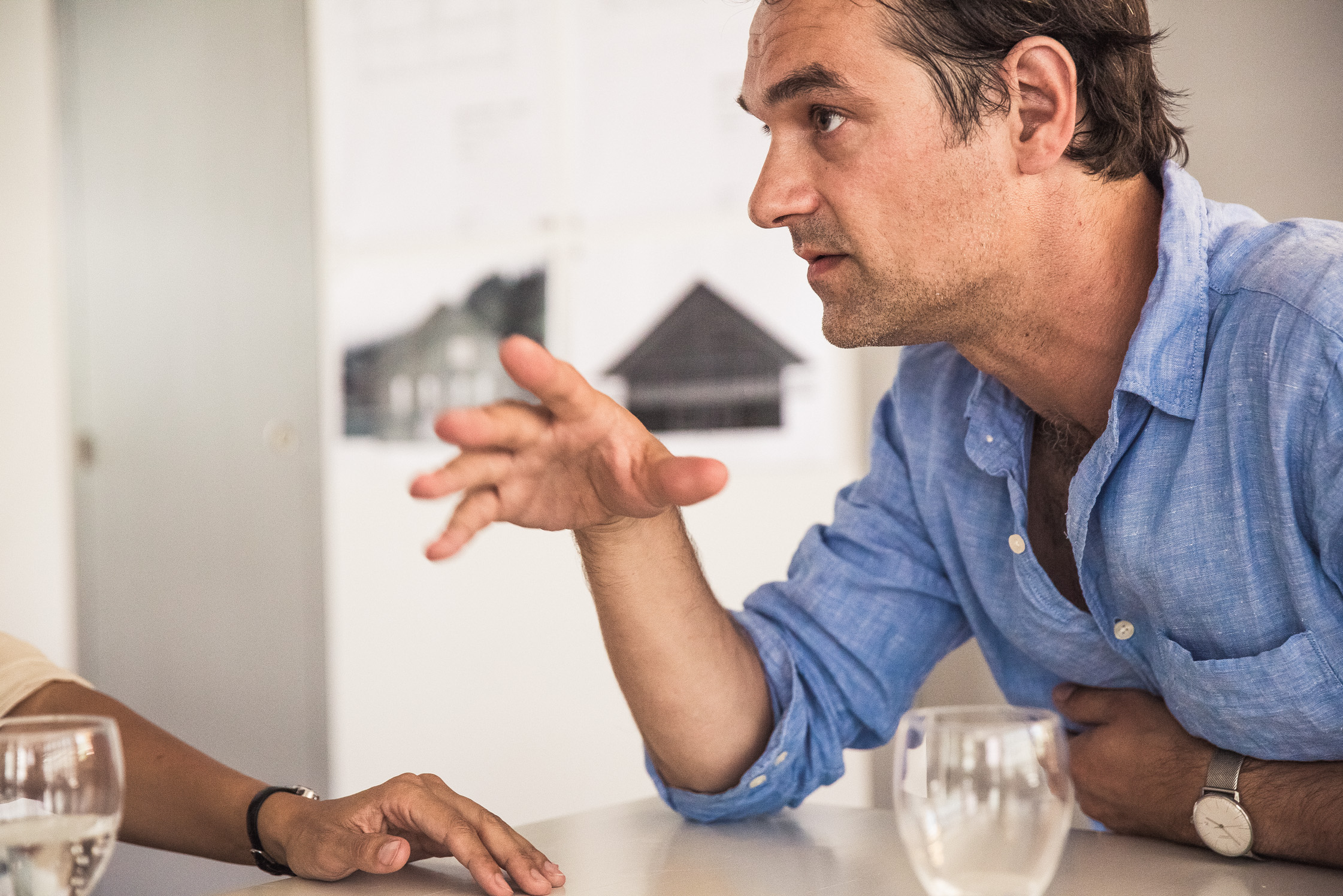

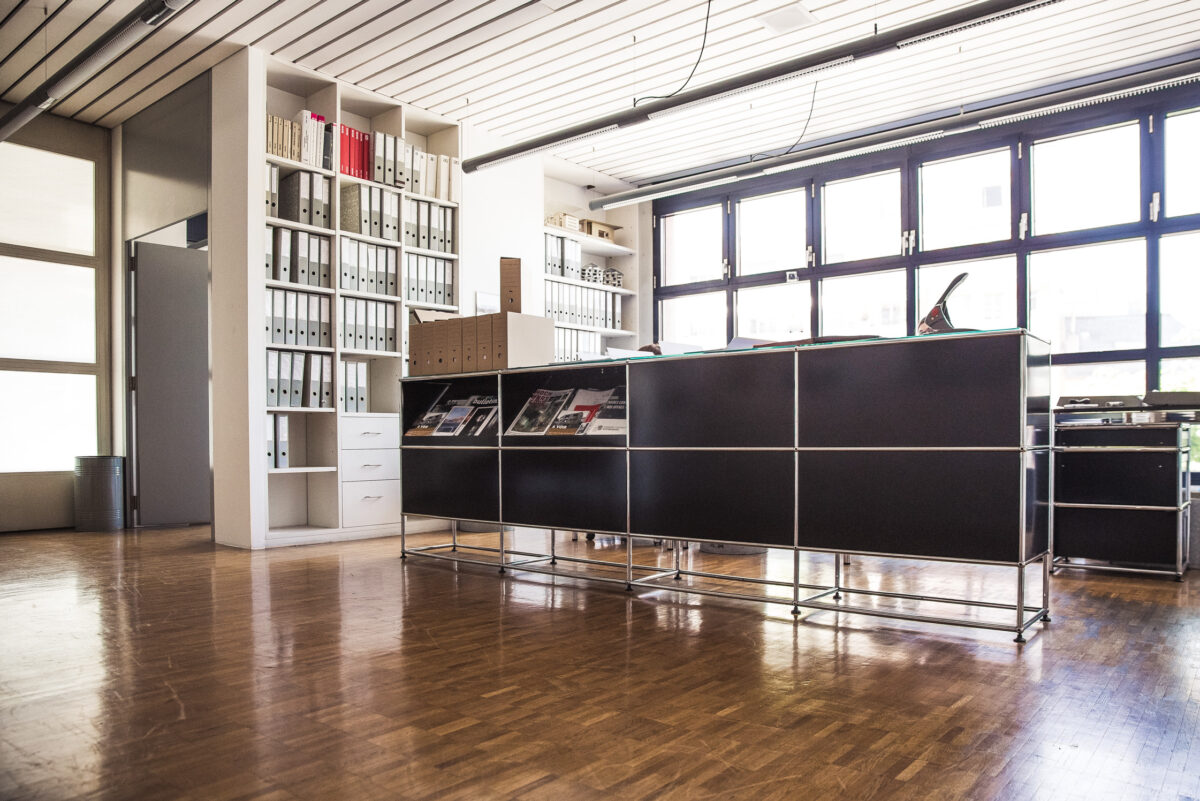
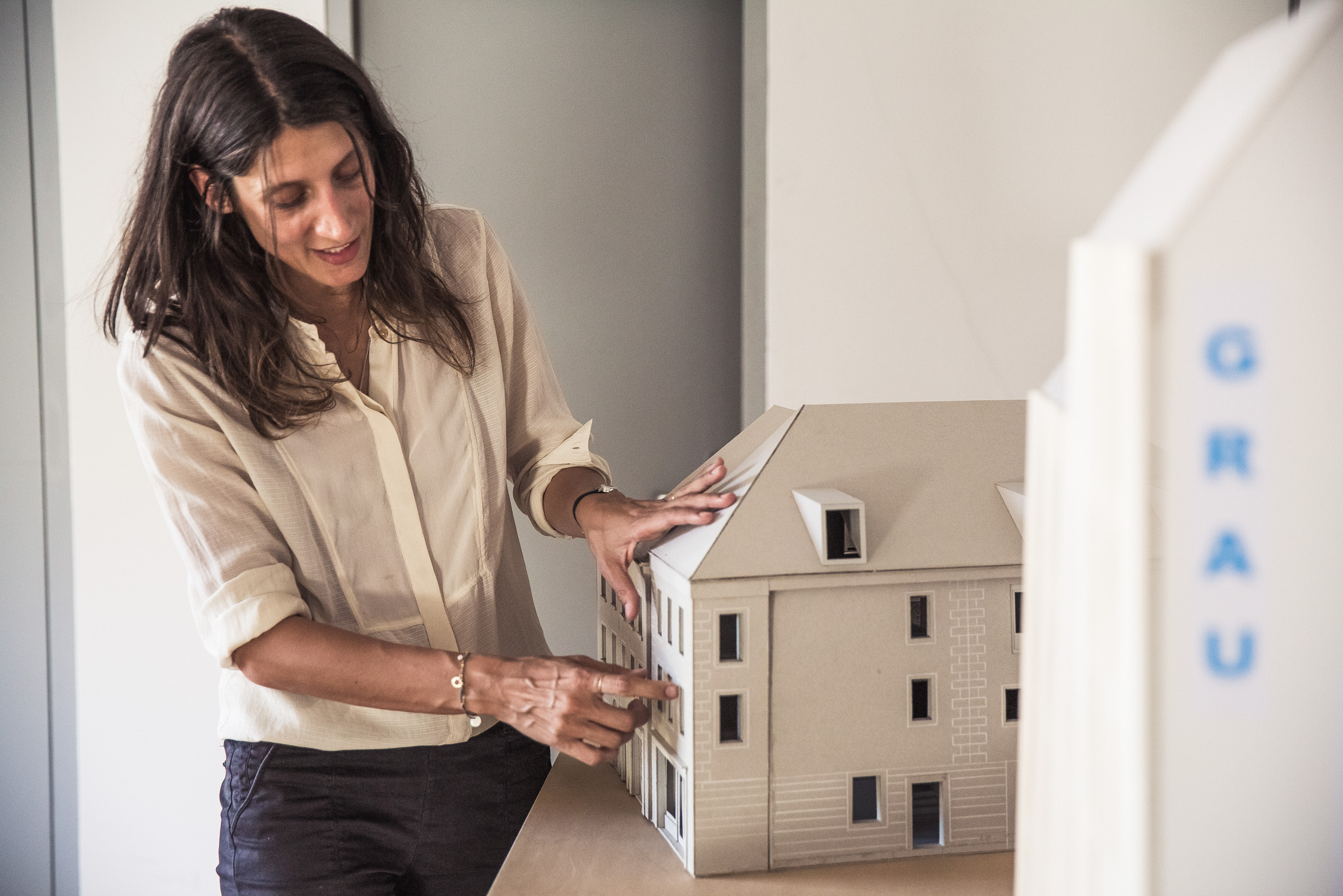
-
Are you also architecture tourists?
Götz: Not in the sense that we would travel to Transylvania just to visit the churches there. But, of course, when we are travelling we always look around and see what’s there. There are interesting buildings everywhere.
Catherine: Yes, and there are many buildings that are interesting, certainly not only the big shots. You’re always able to discuss the relationship between volume and emptiness and a building’s real impact. Architecture is, for us, a very practical art.
-
Which places in Valais are especially worth visiting?
Götz: Without a doubt, you should visit the Abbey of Saint-Maurice. For eating and drinking, we would recommend the Fol’terres wine bar in Fully and the La Vache Qui Vole restaurant in Martigny. And, of course, you should experience the unique nature and mountains, through hiking and skiing.
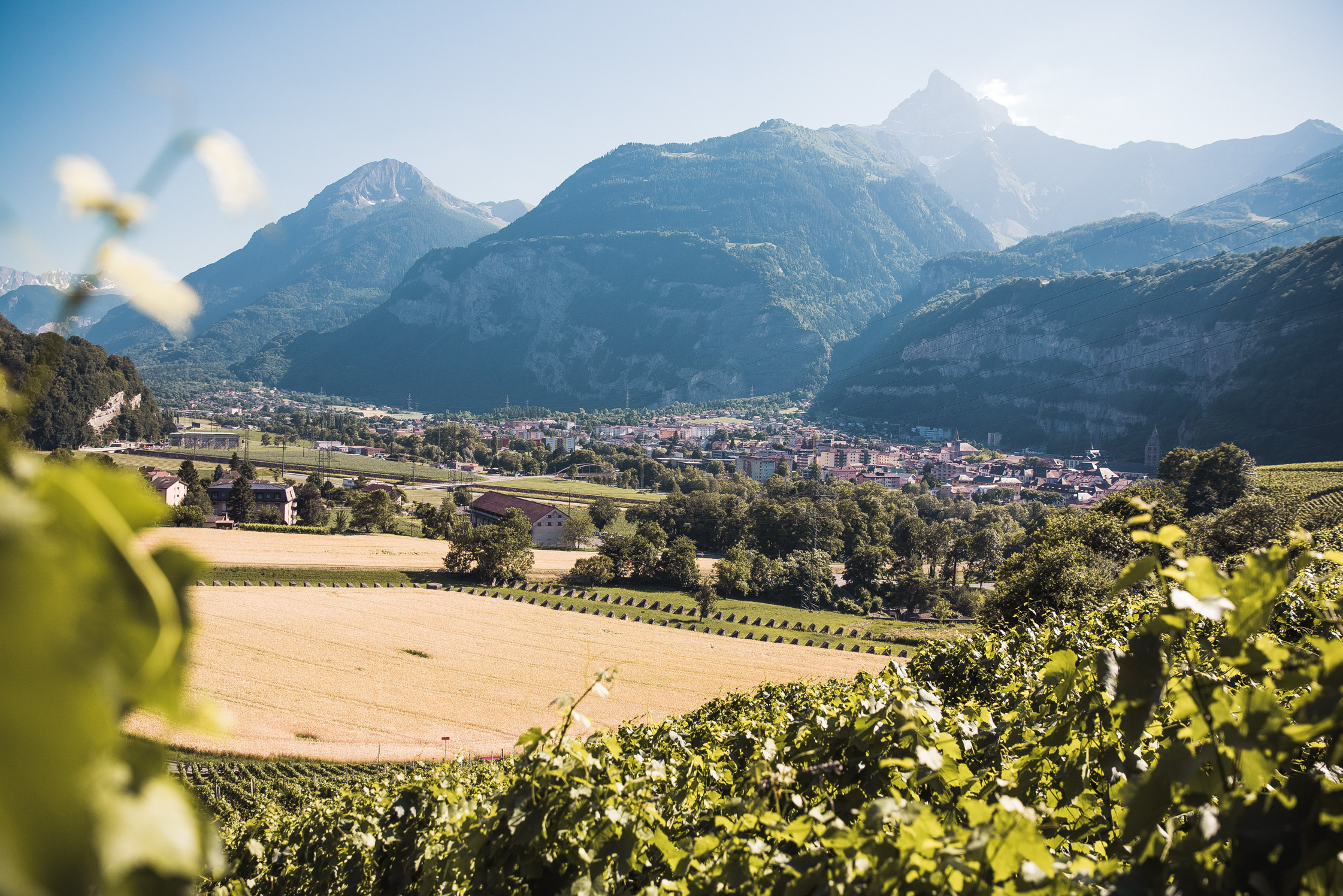
Thank you for letting us visit you in Valais. You can find more information about this pair’s exciting projects, such as the Grand Hotel du Cervin, on their website.
This portrait is produced together with USM for the series “Personalities by USM.” See a different angle to this story with a focus on Catherine and Götz’s interior here.
Photography: Yves Bachmann
Interview: Sandro Murchini
